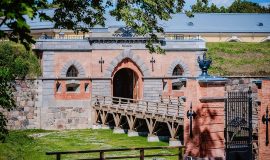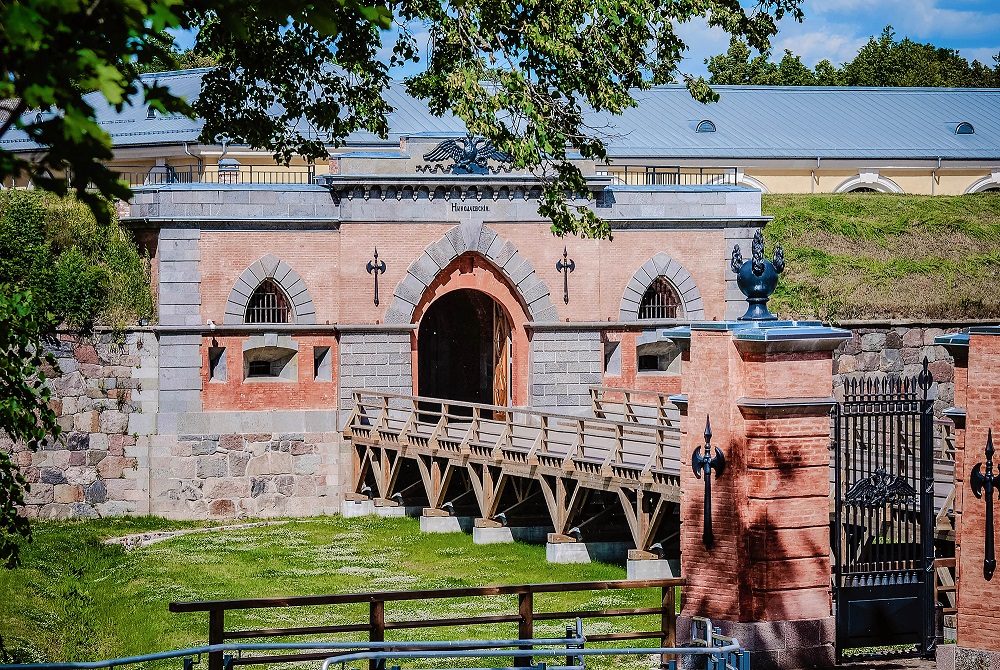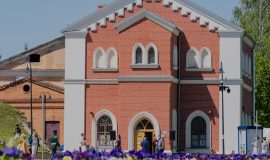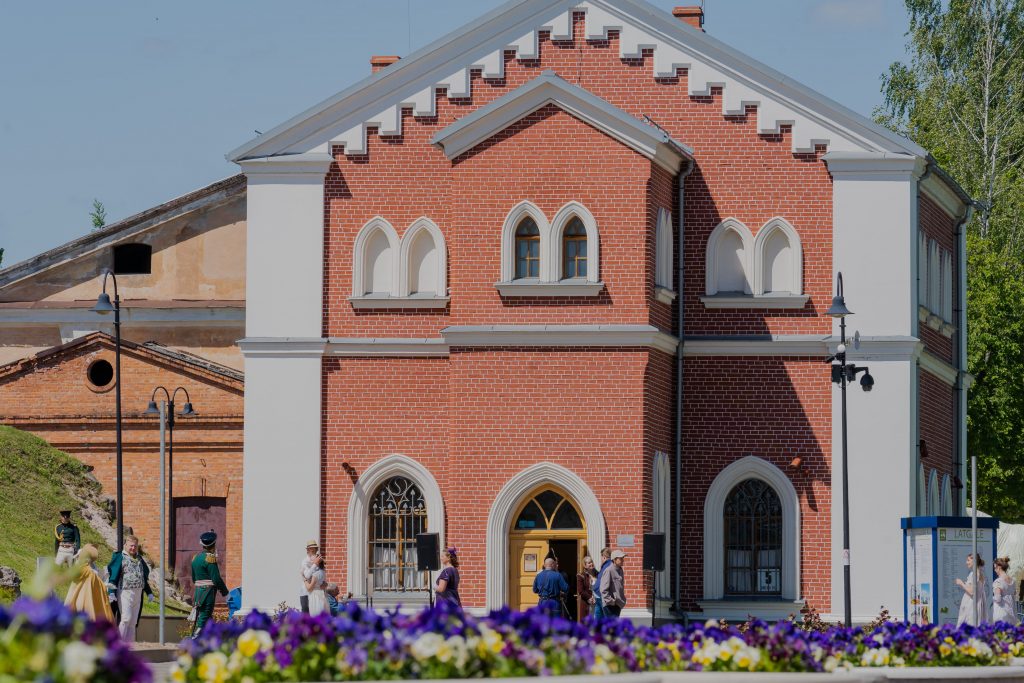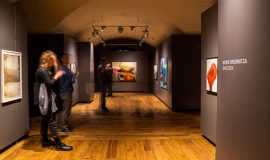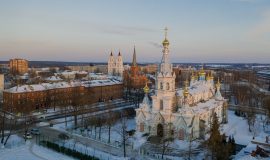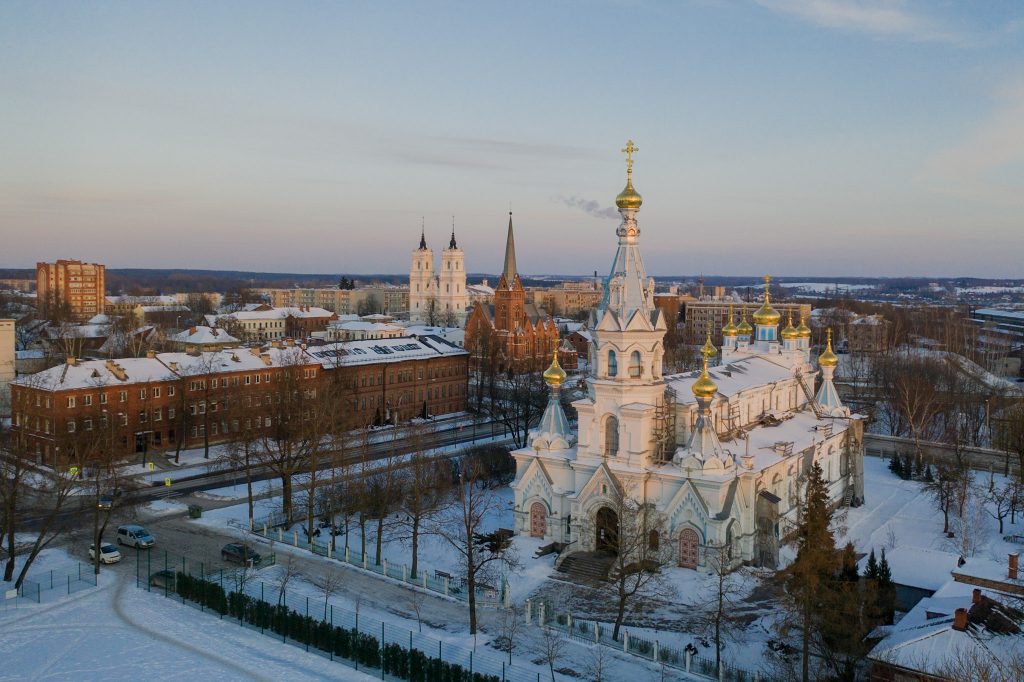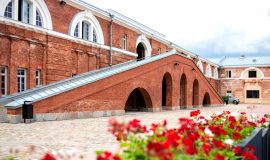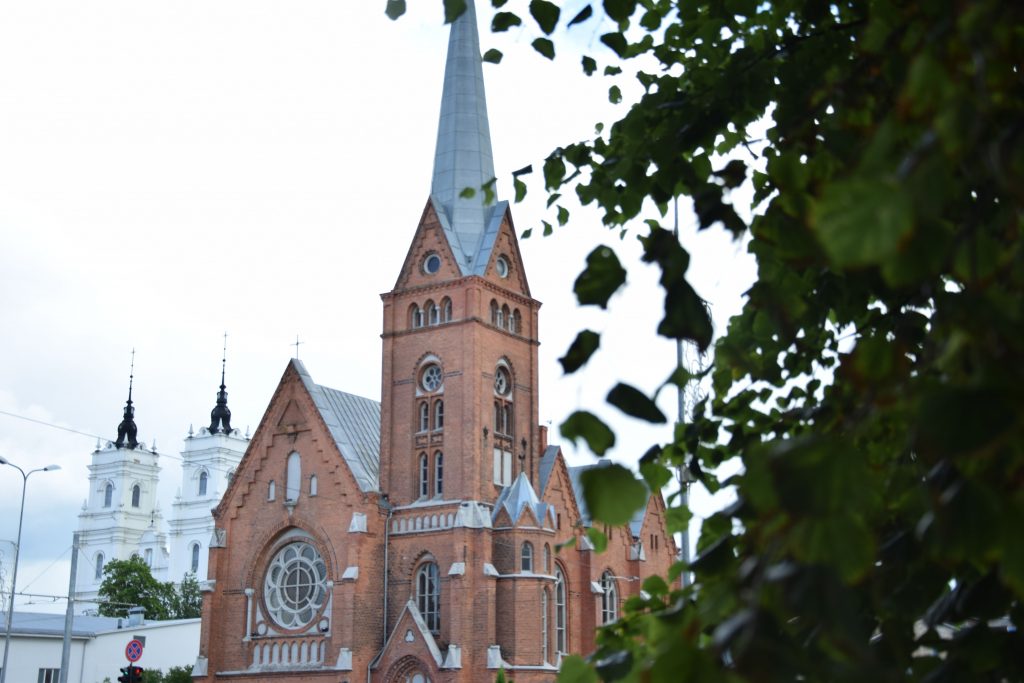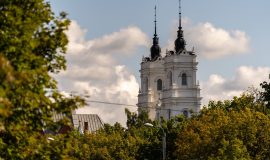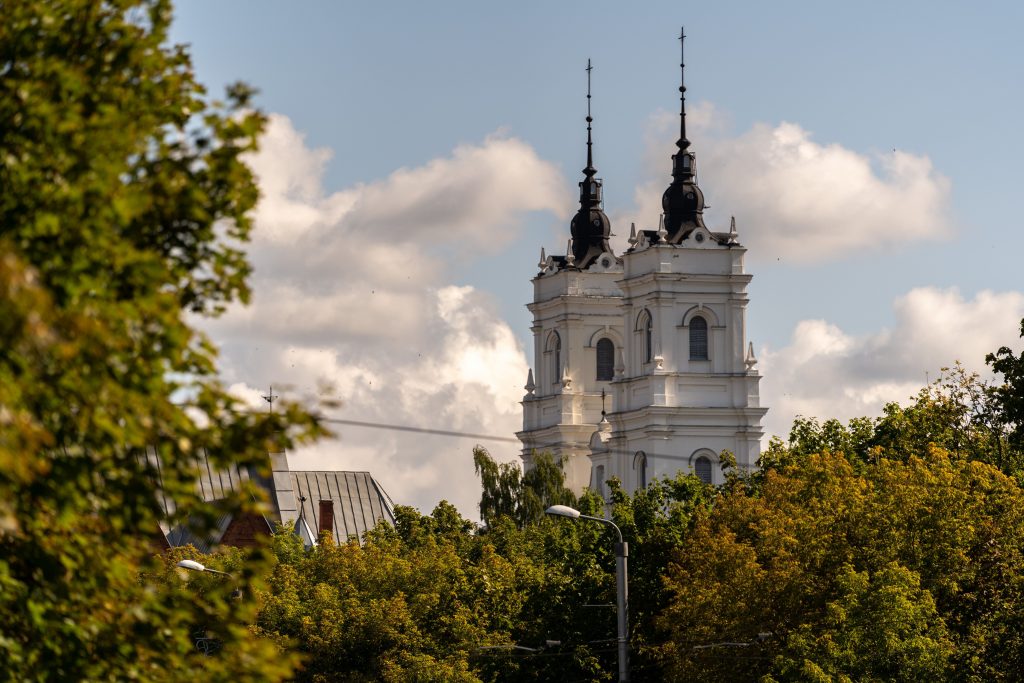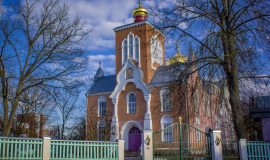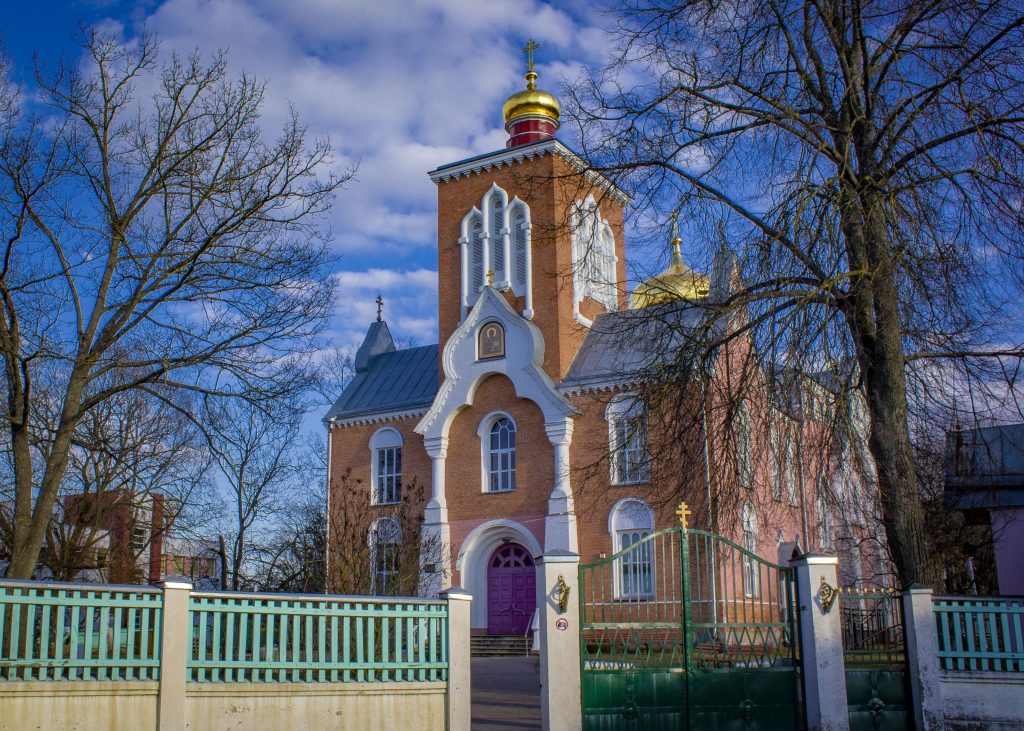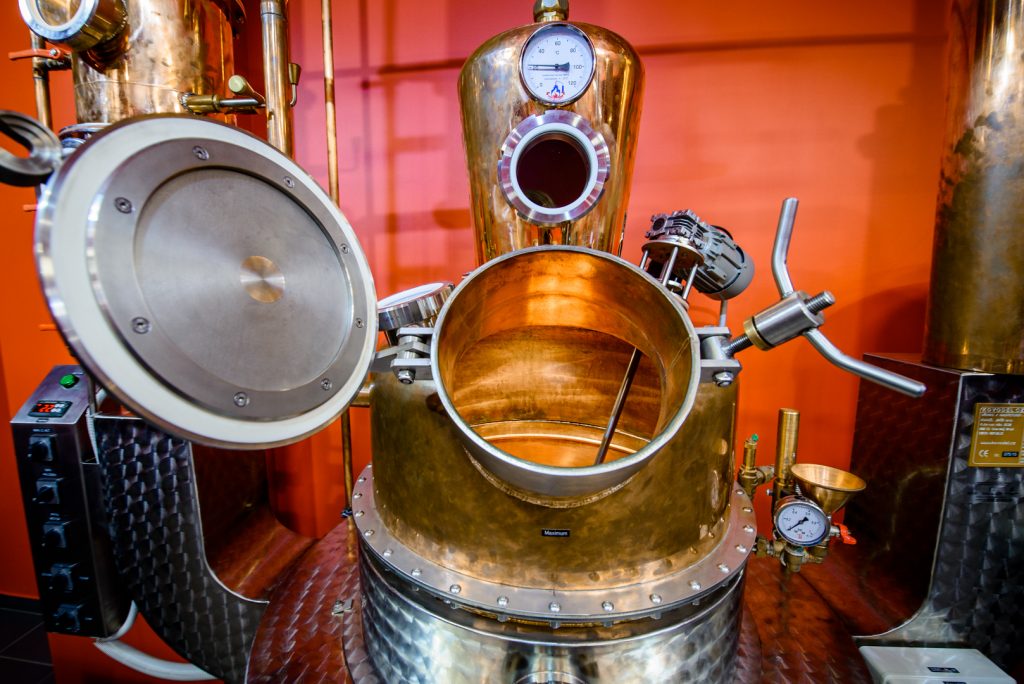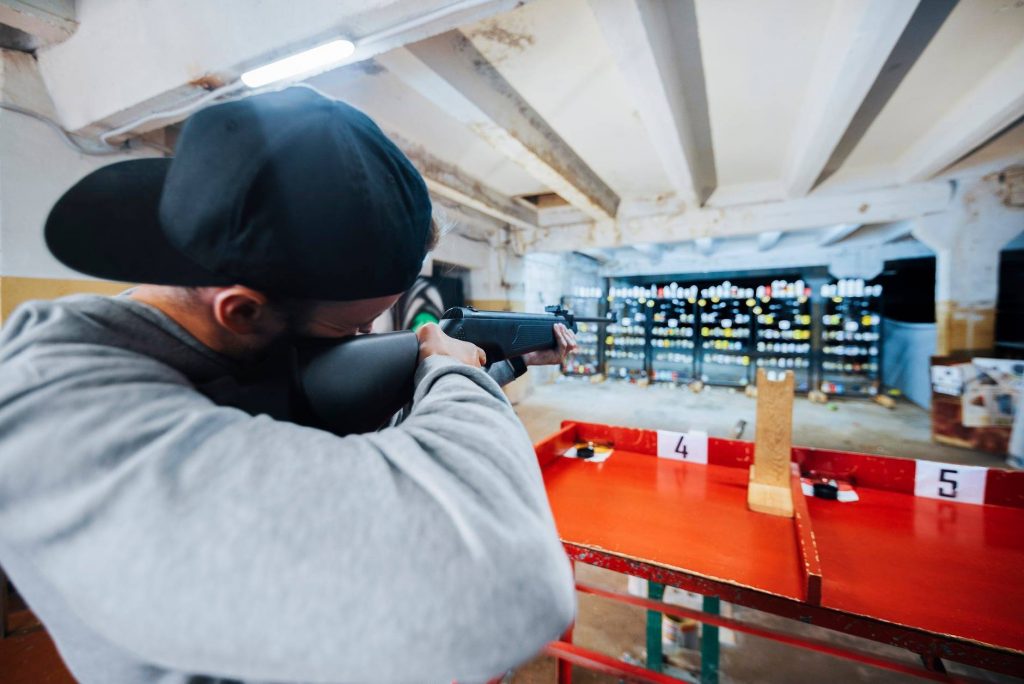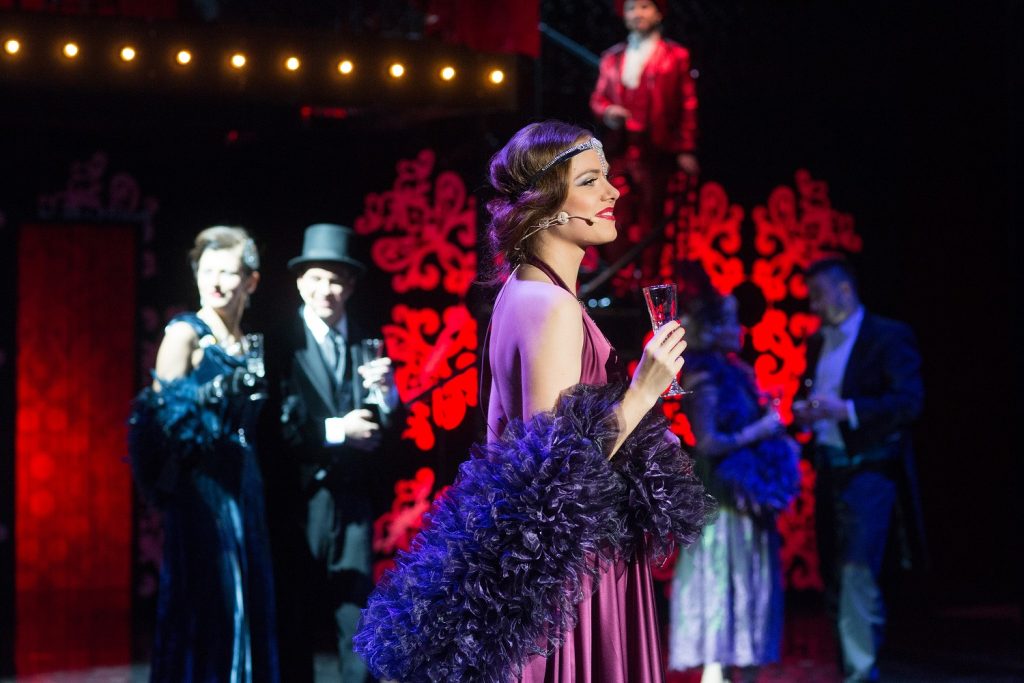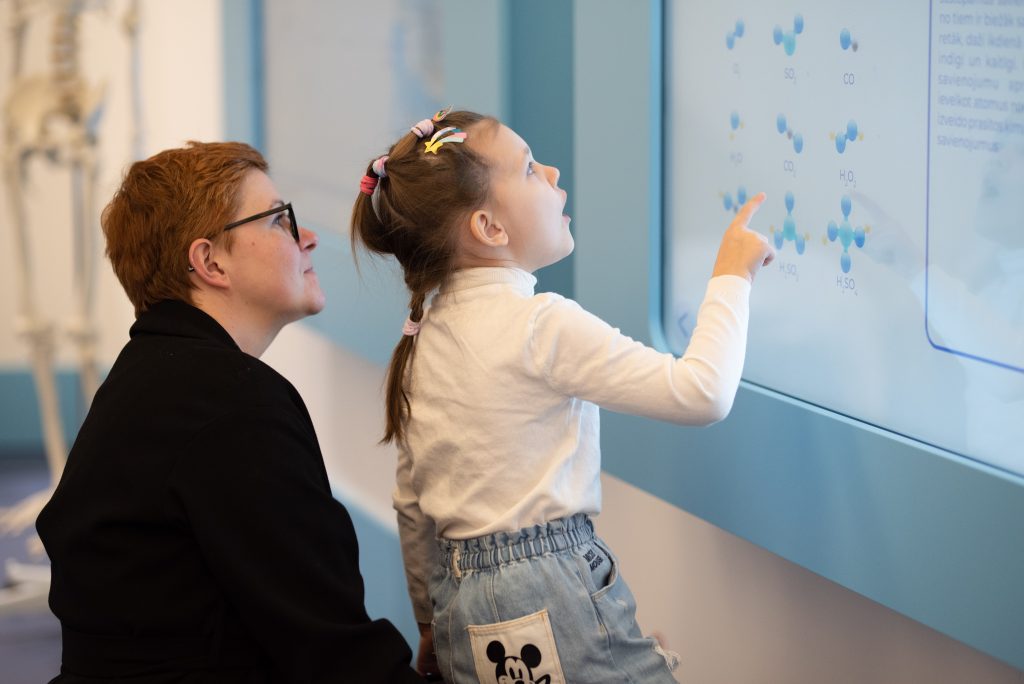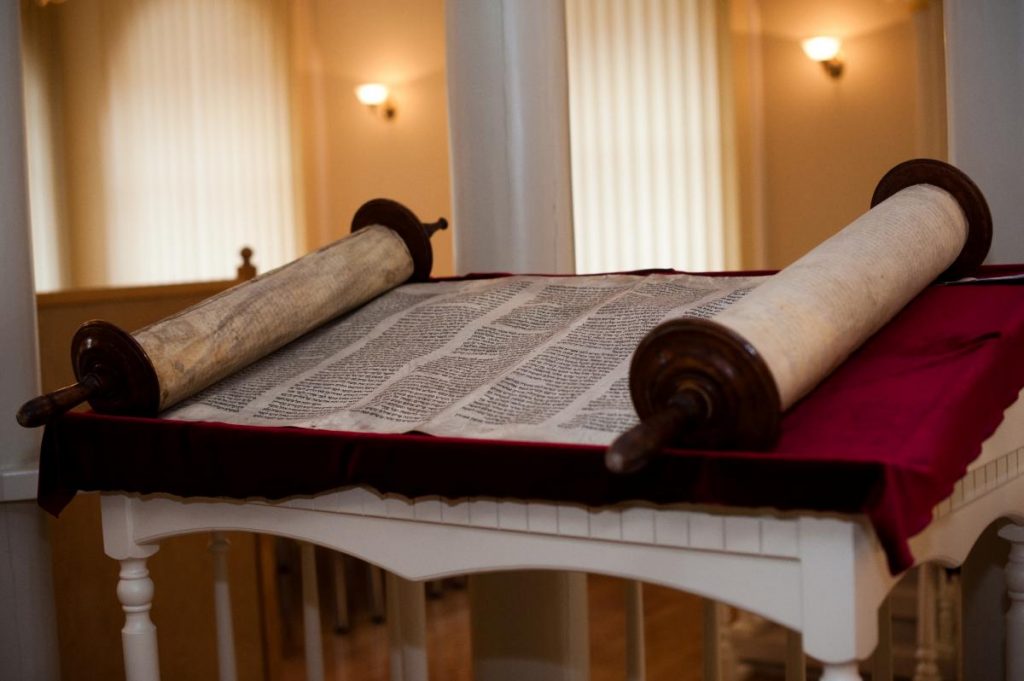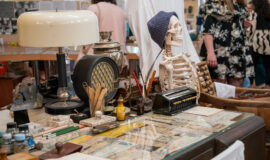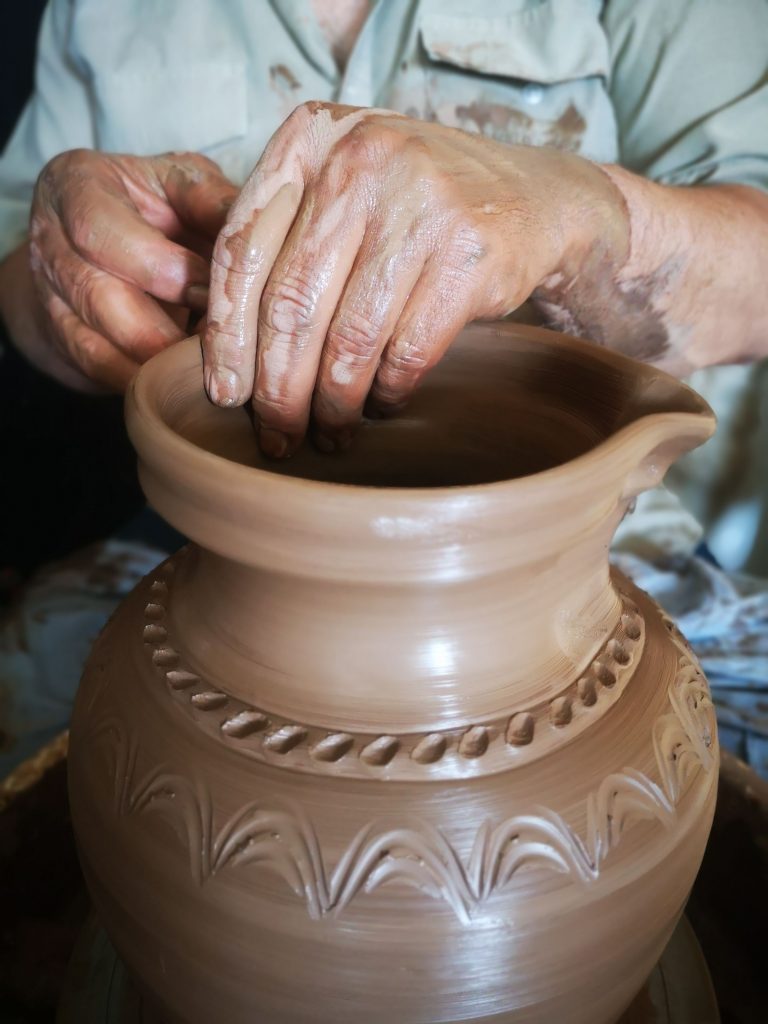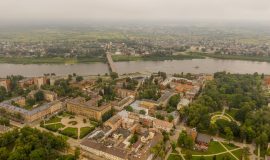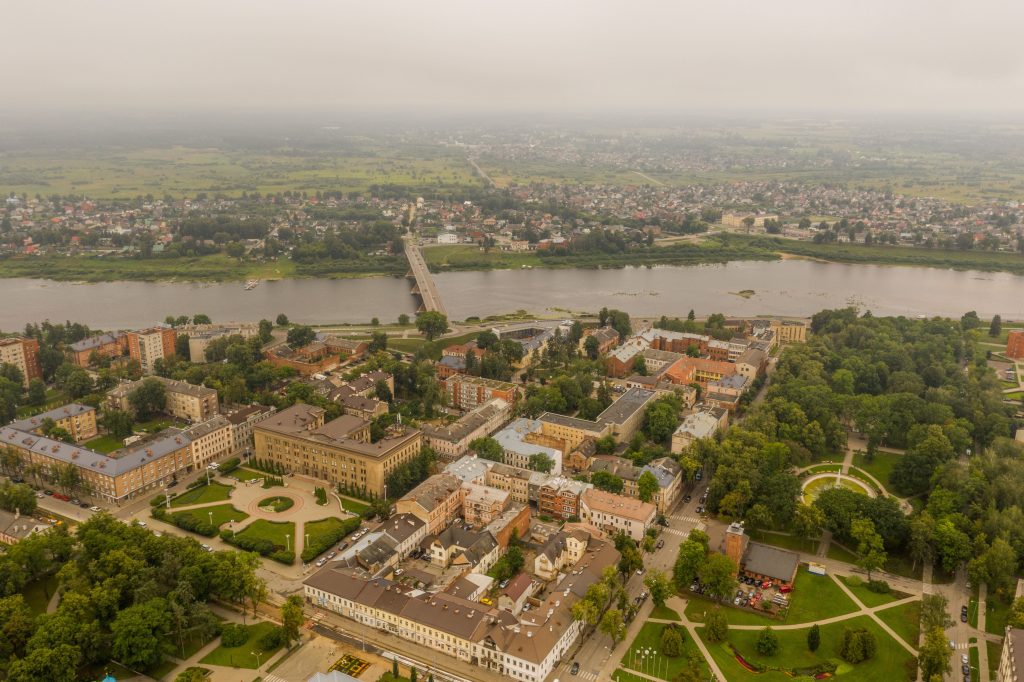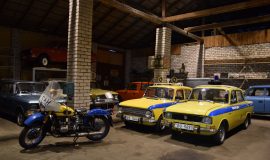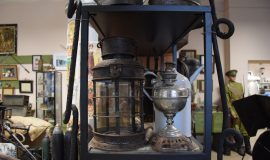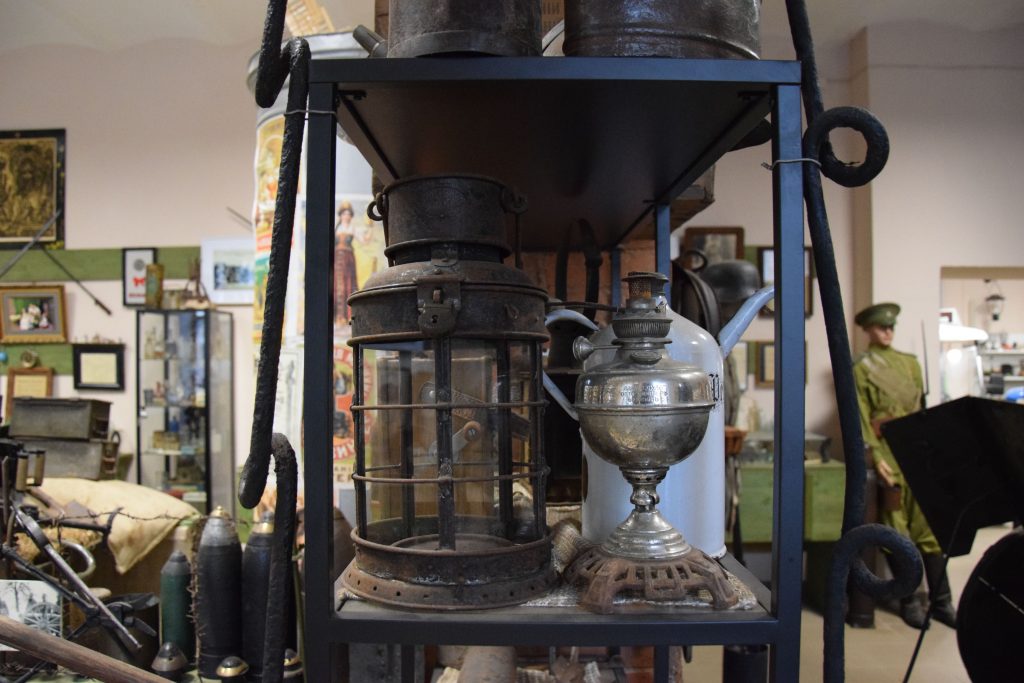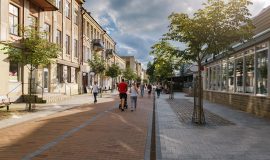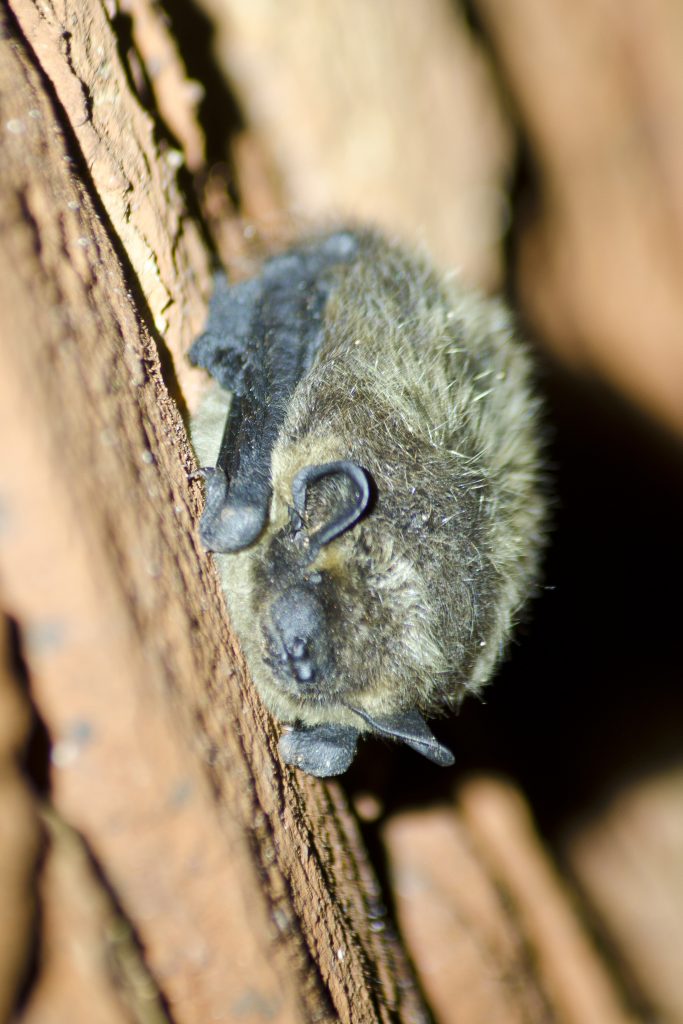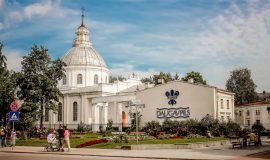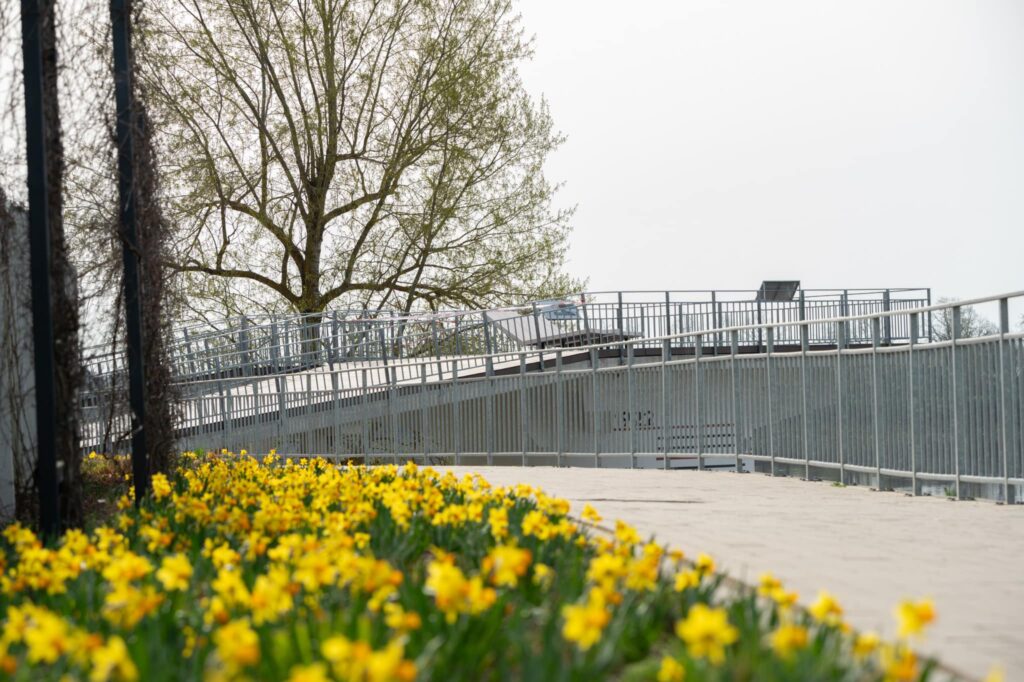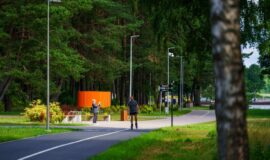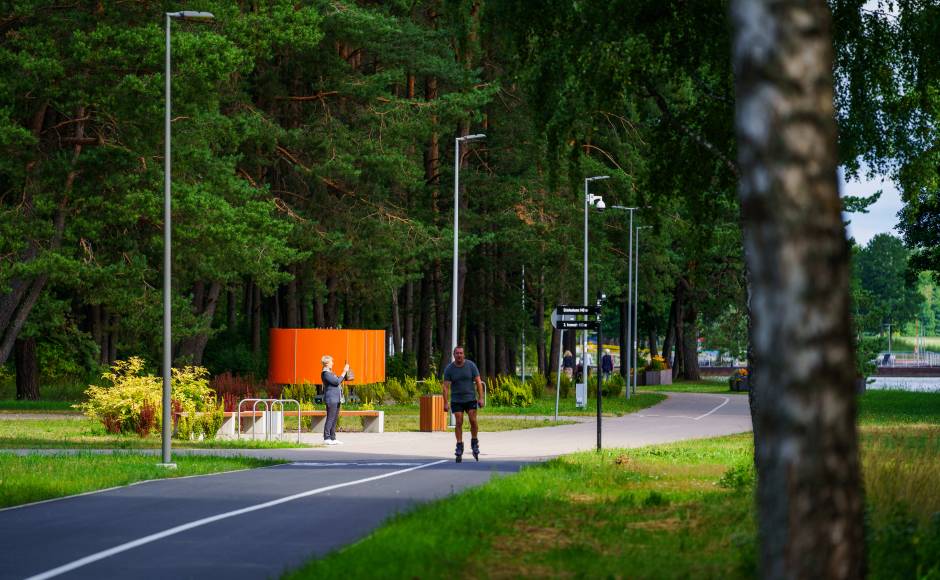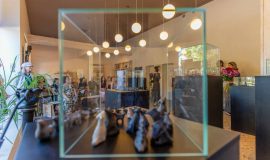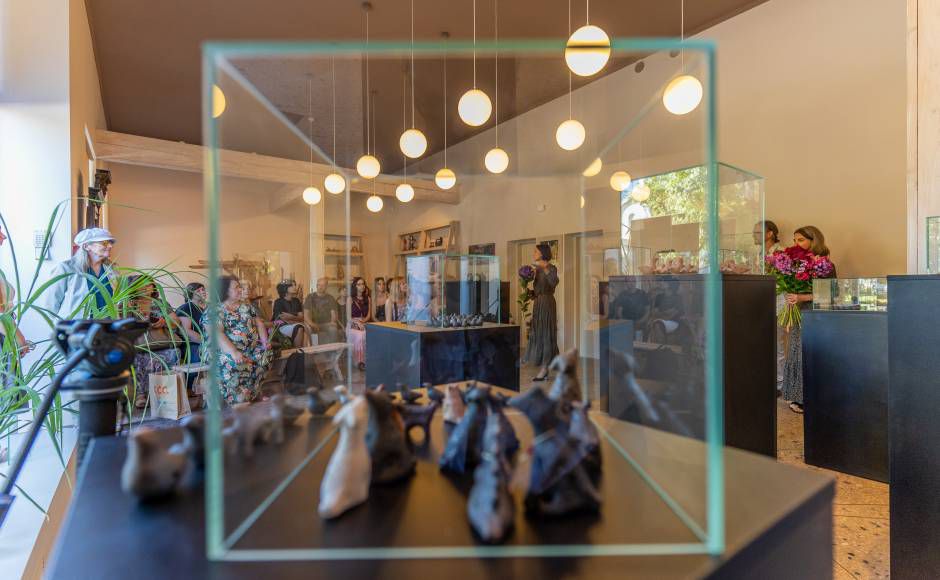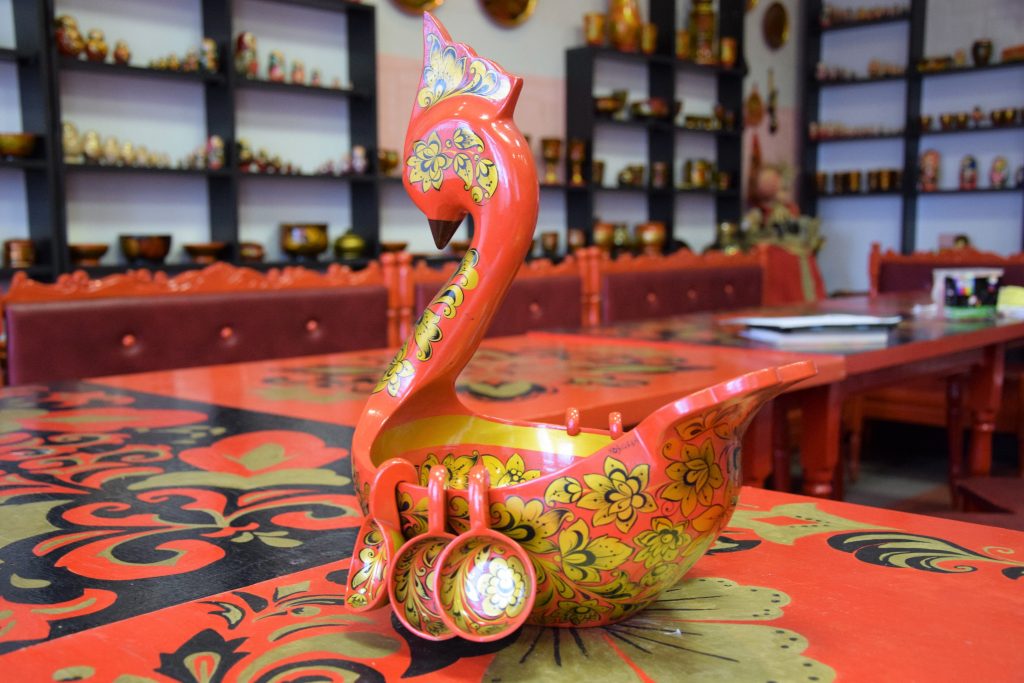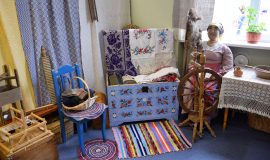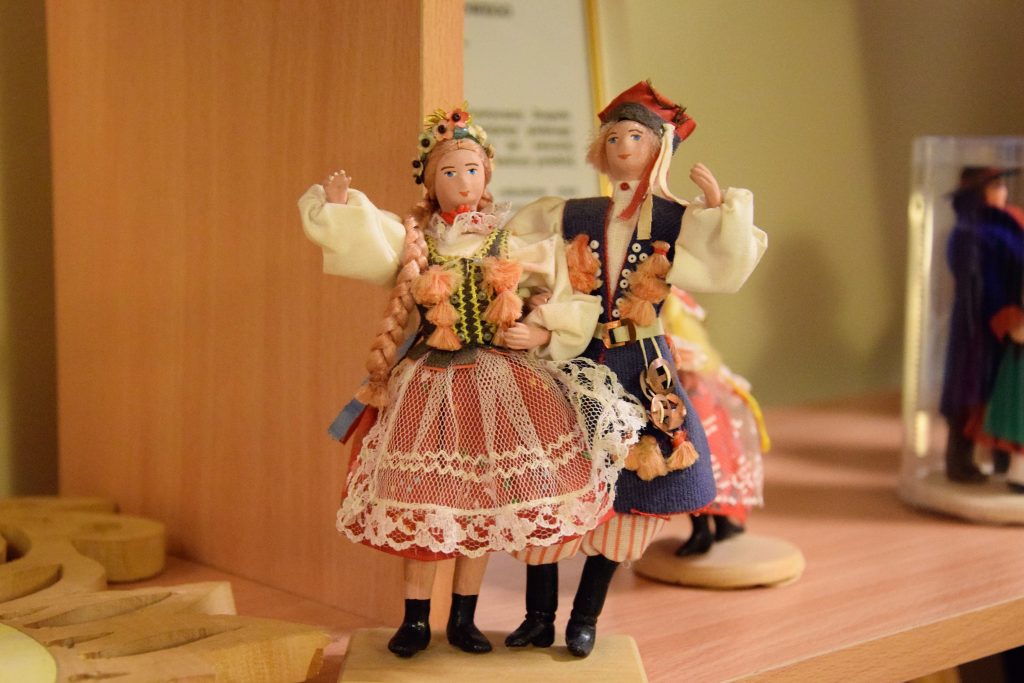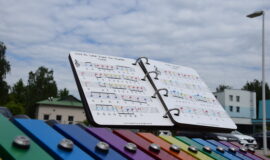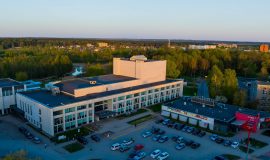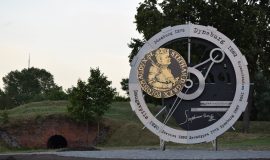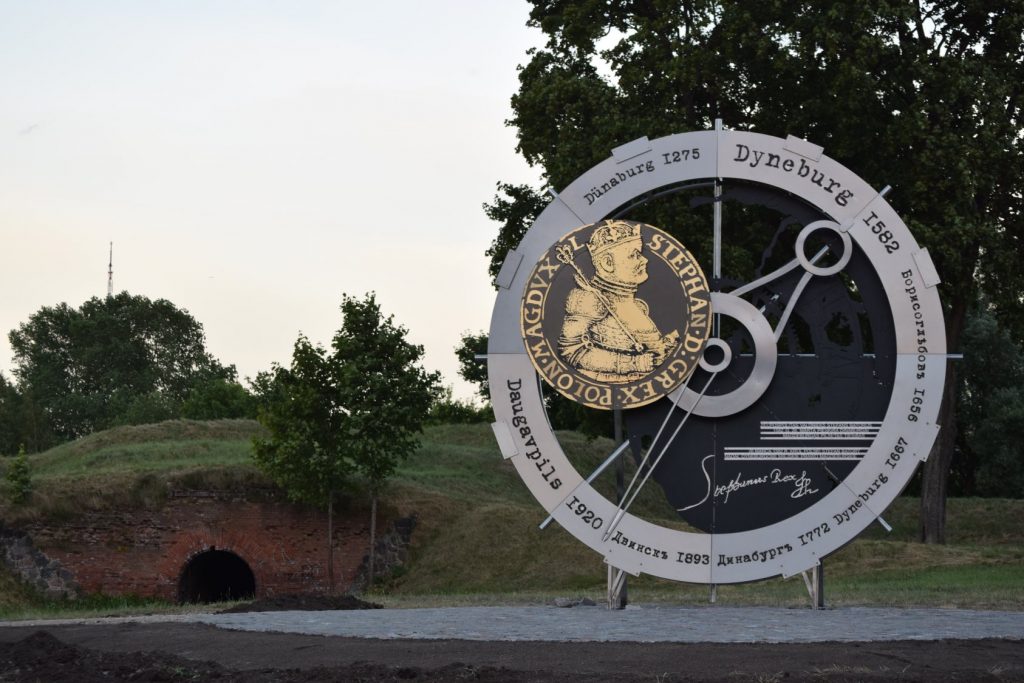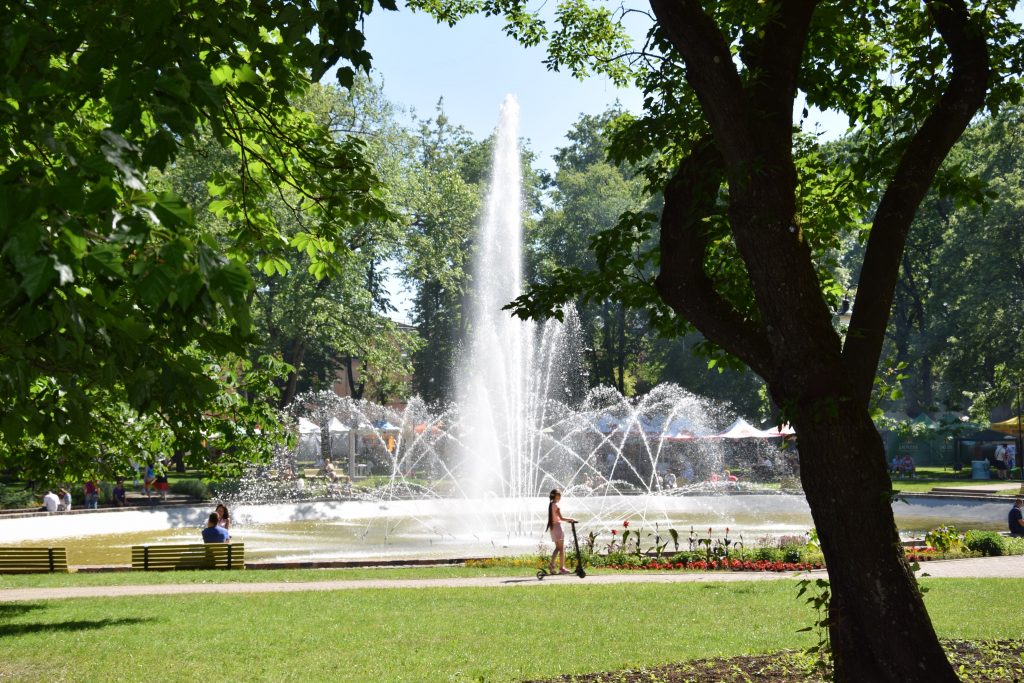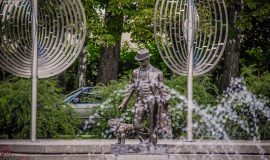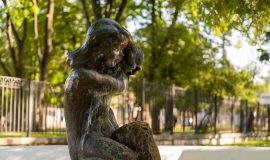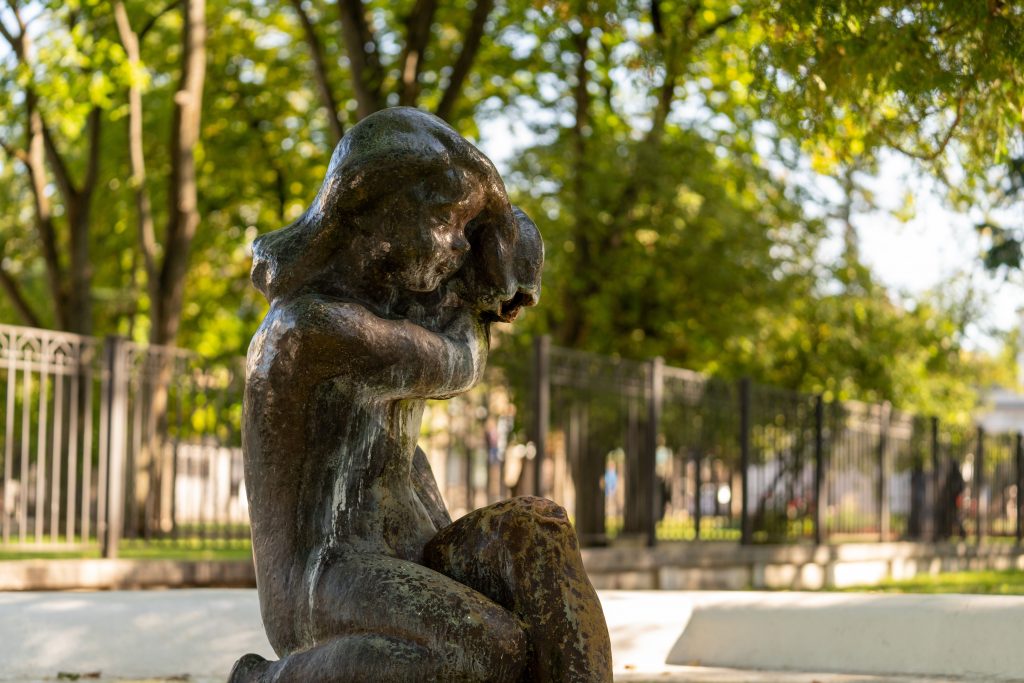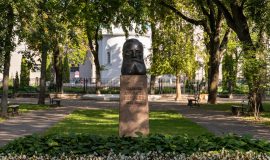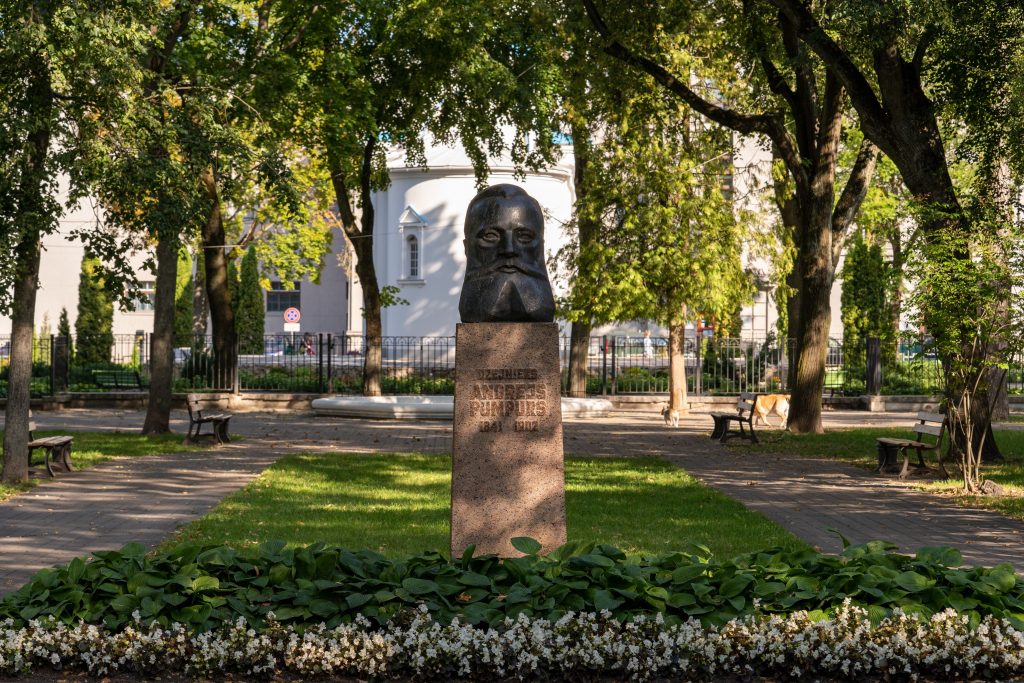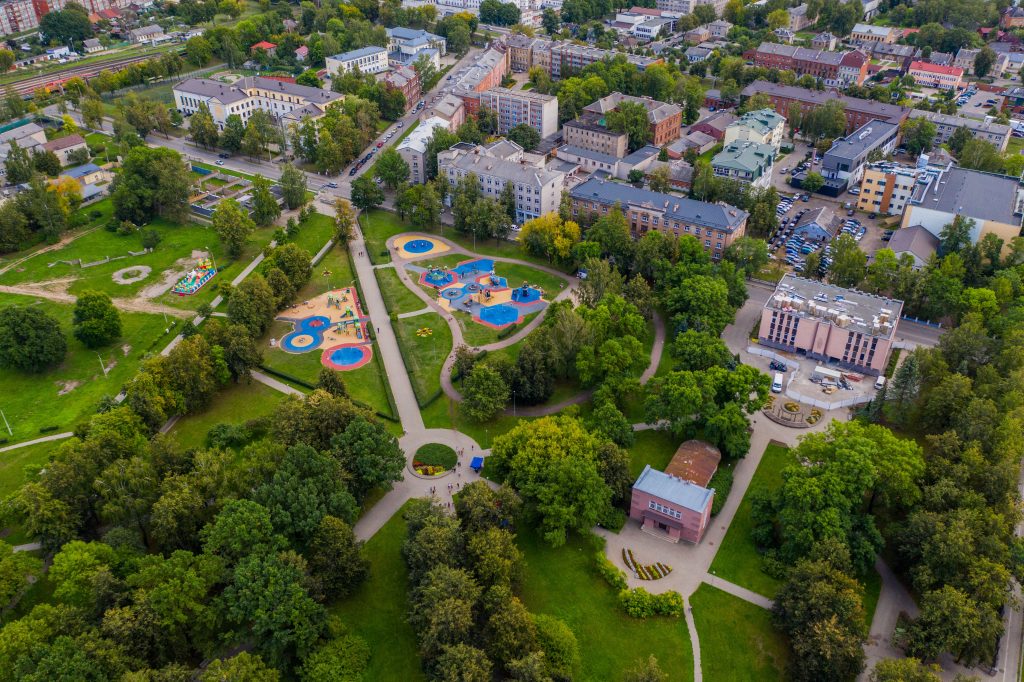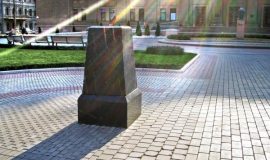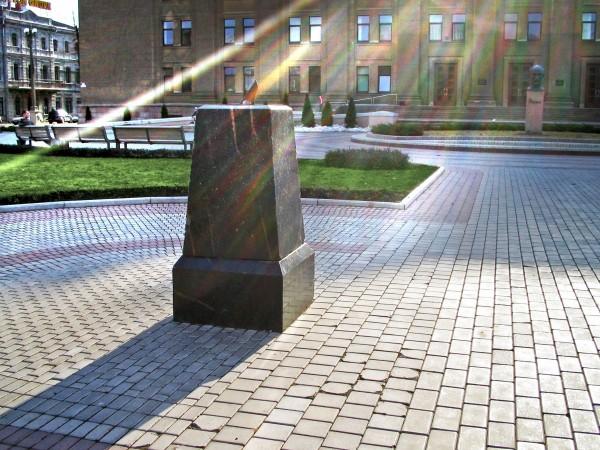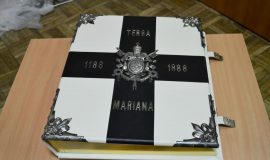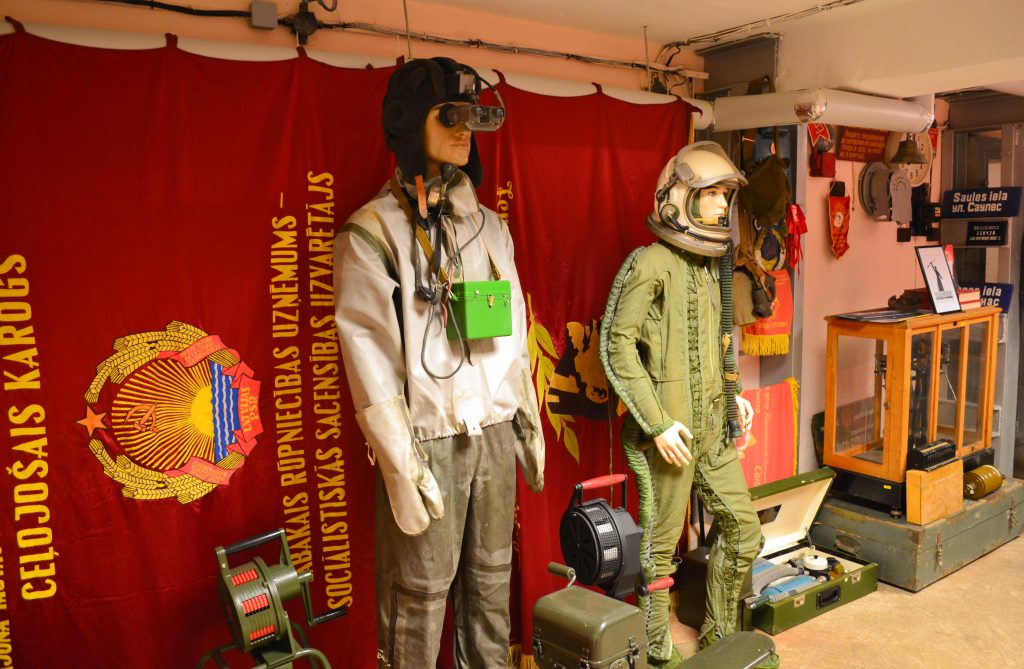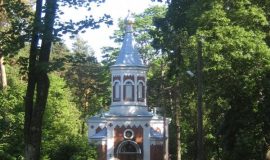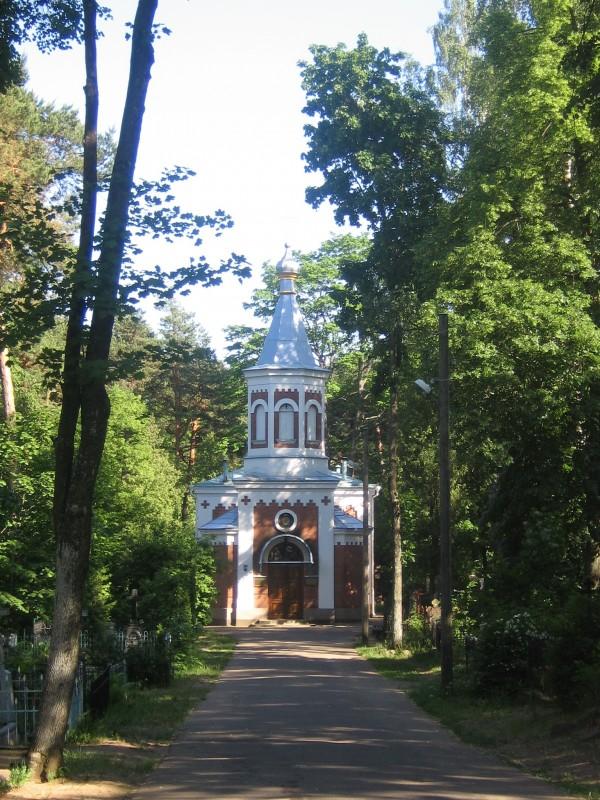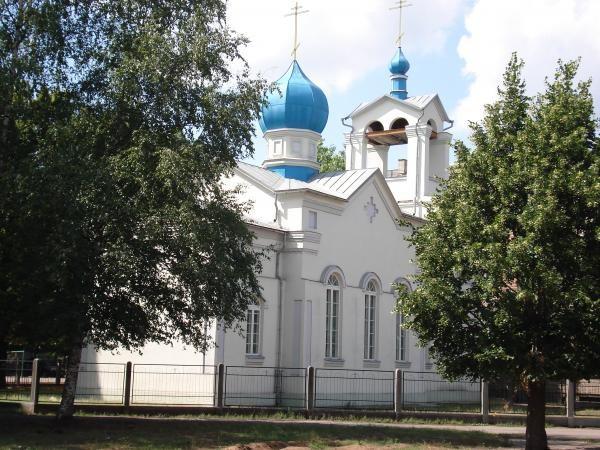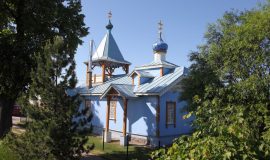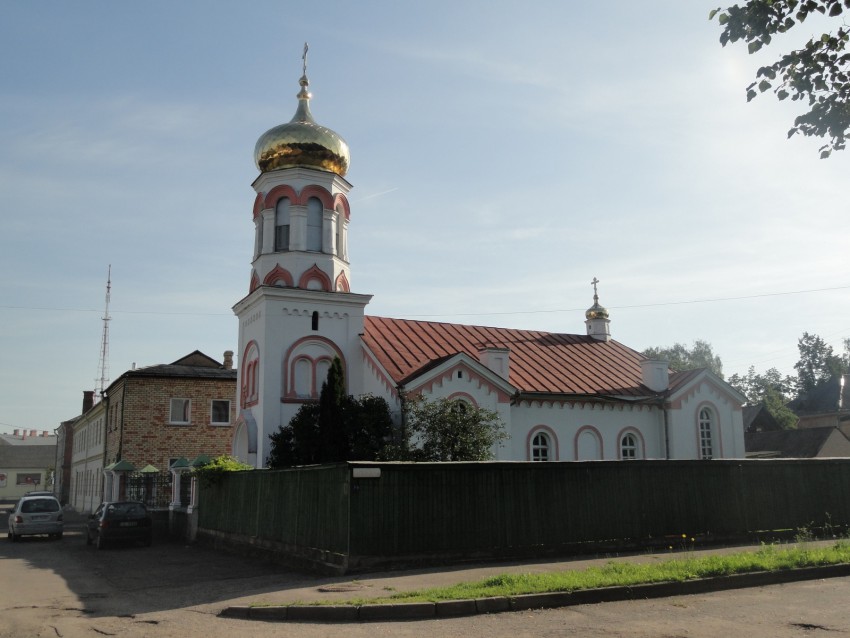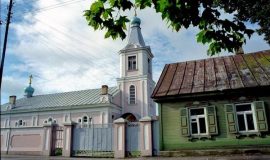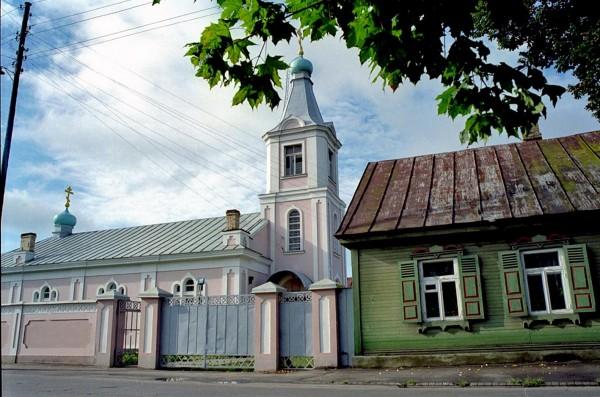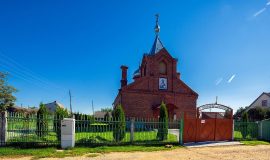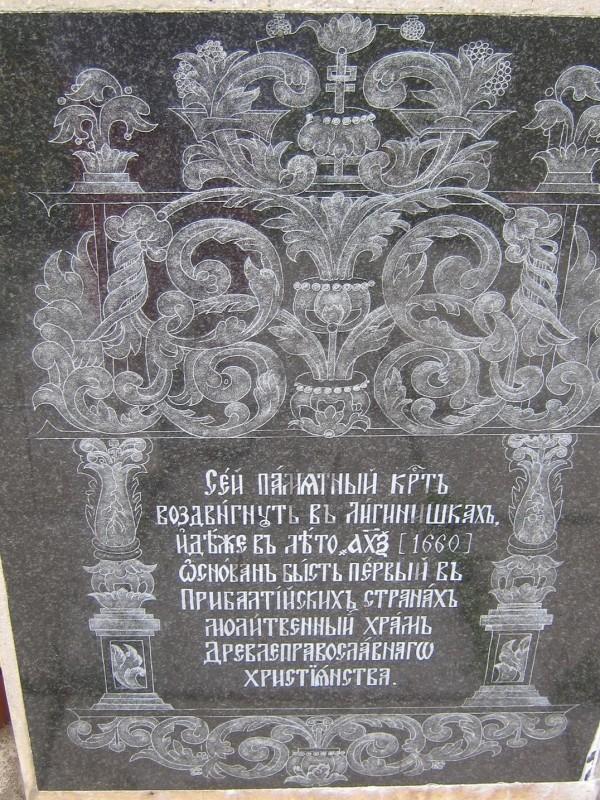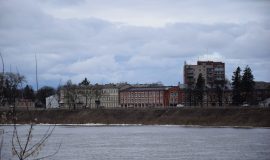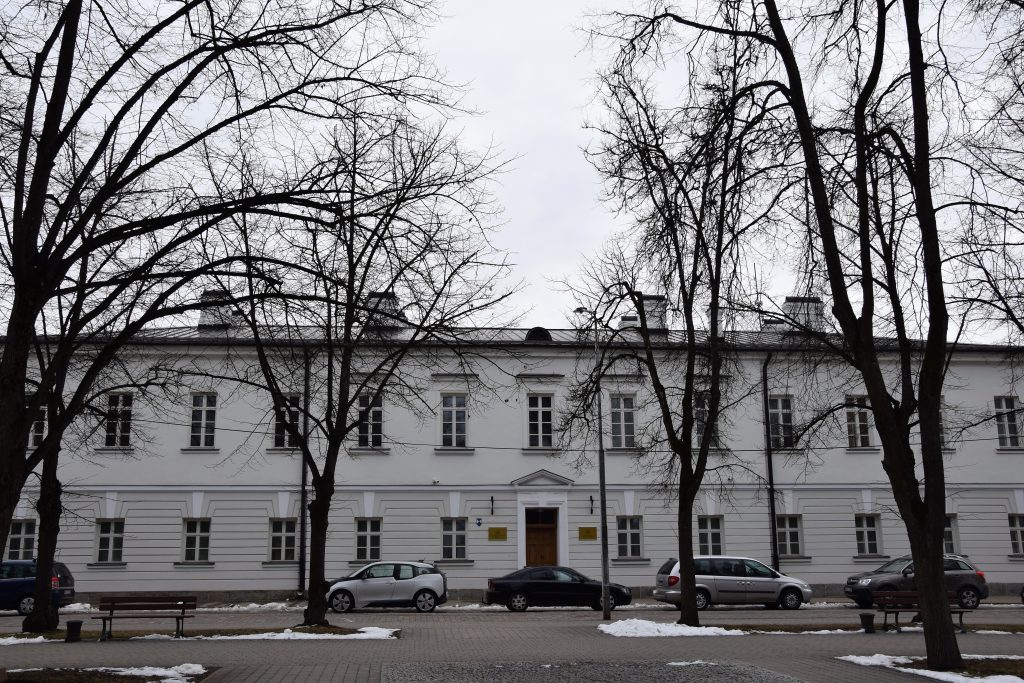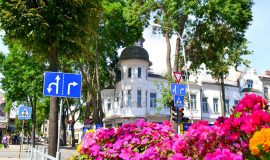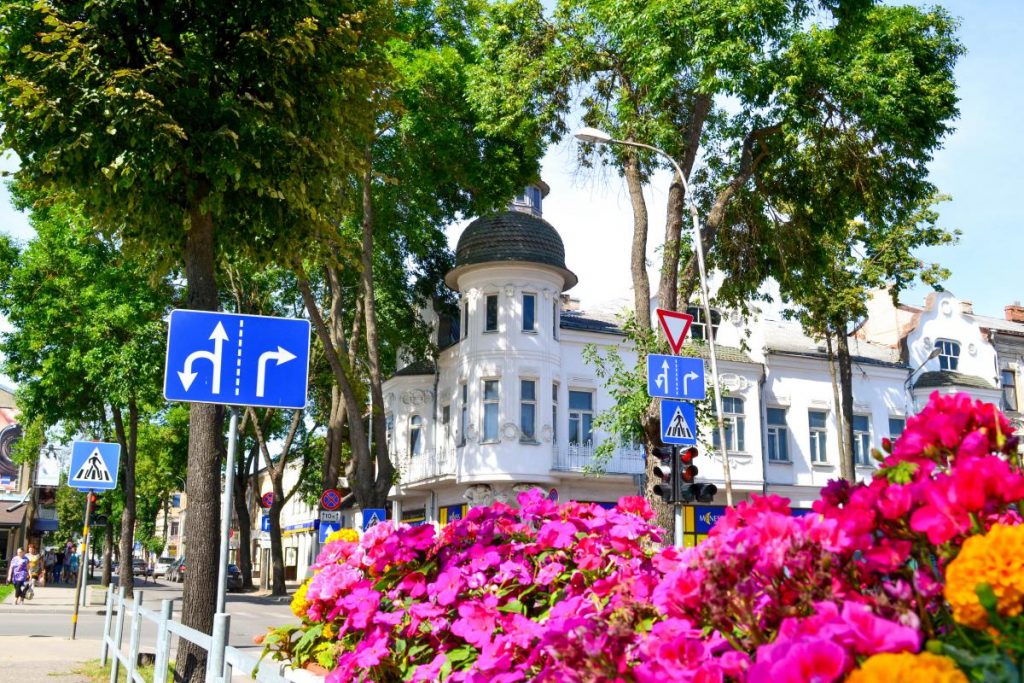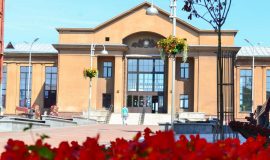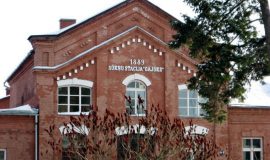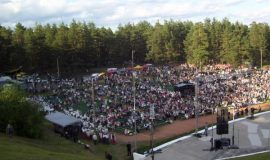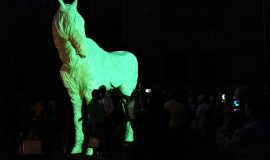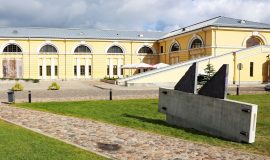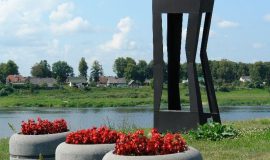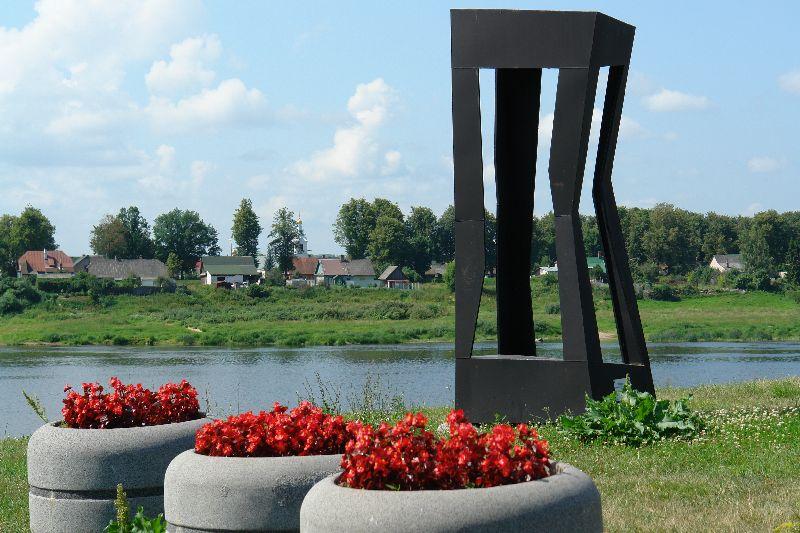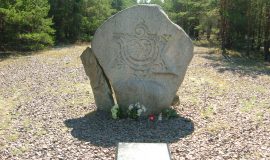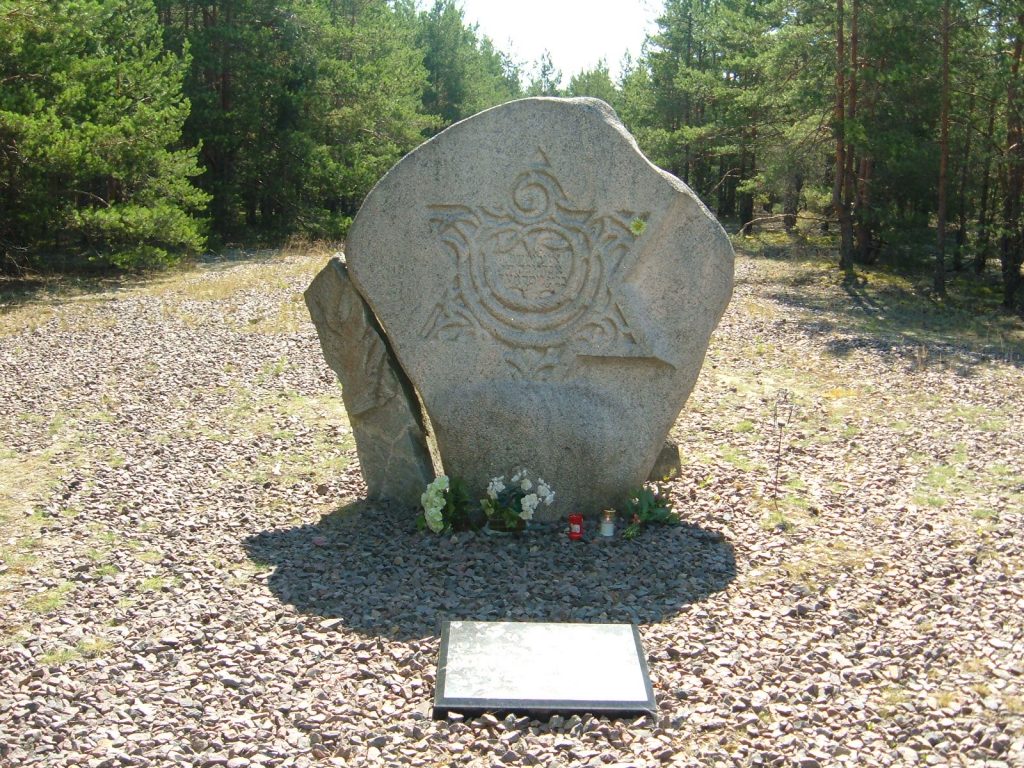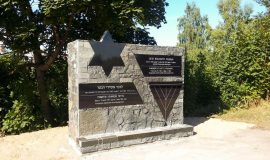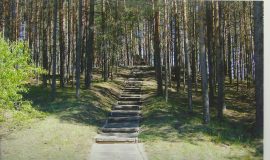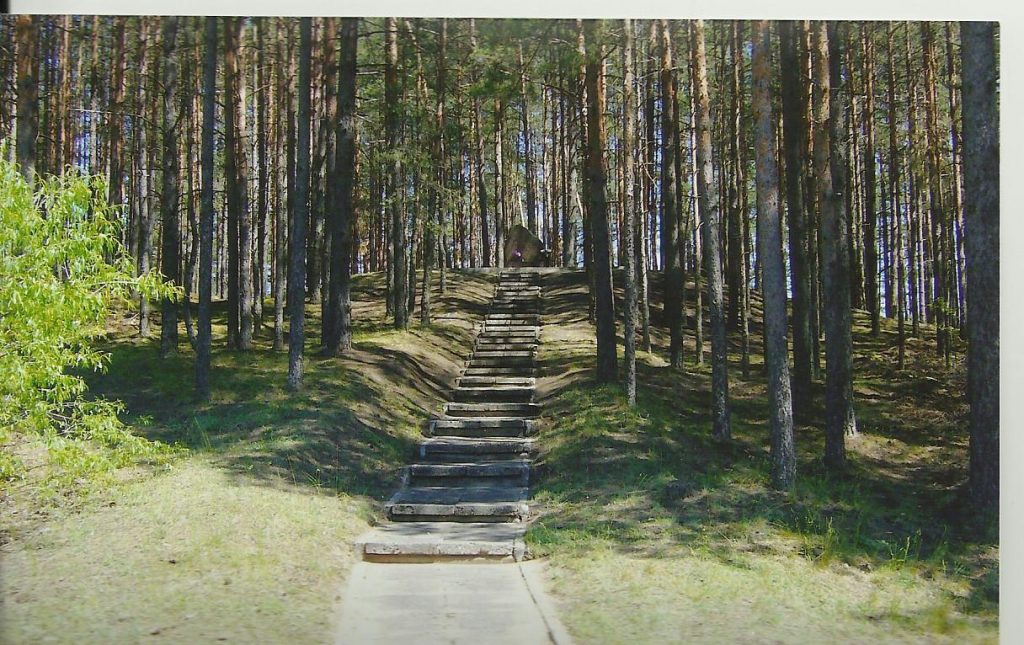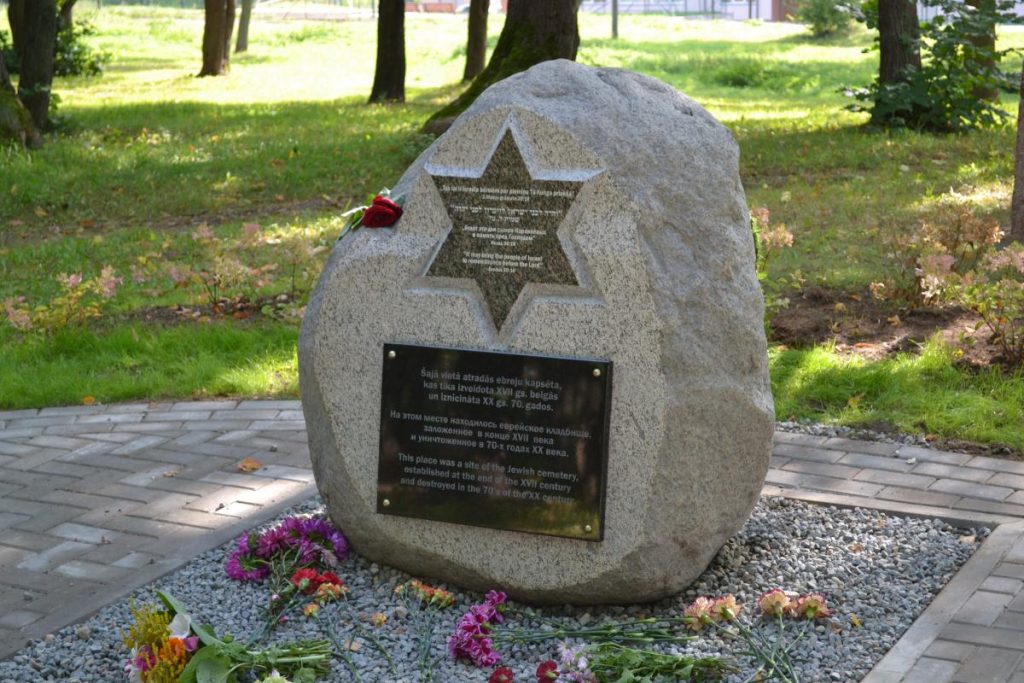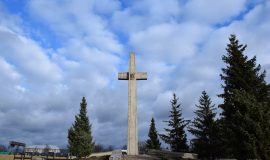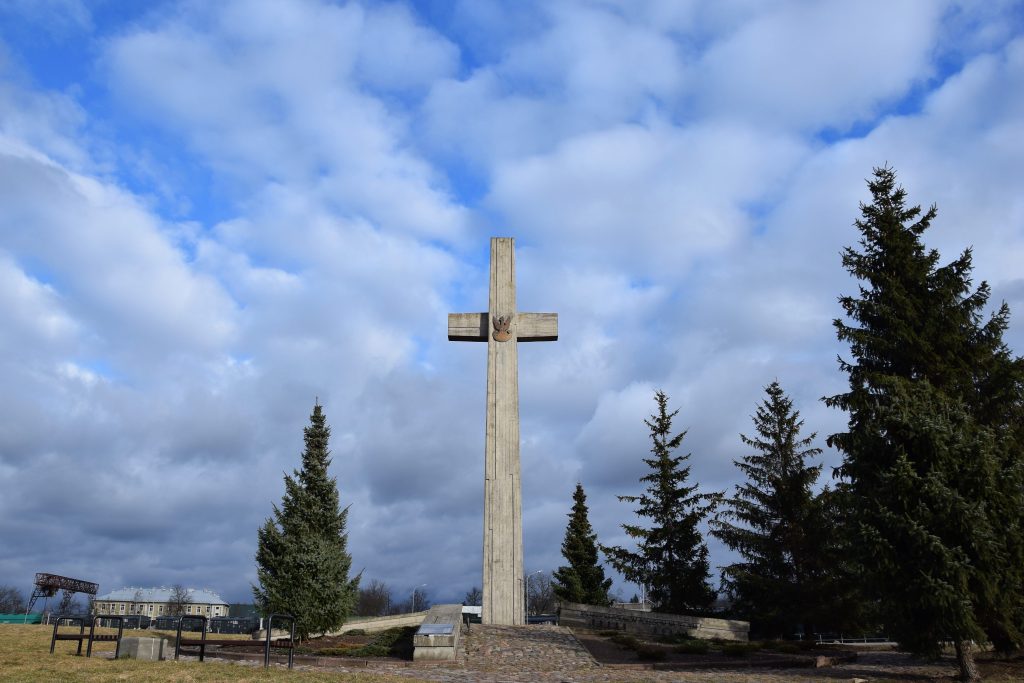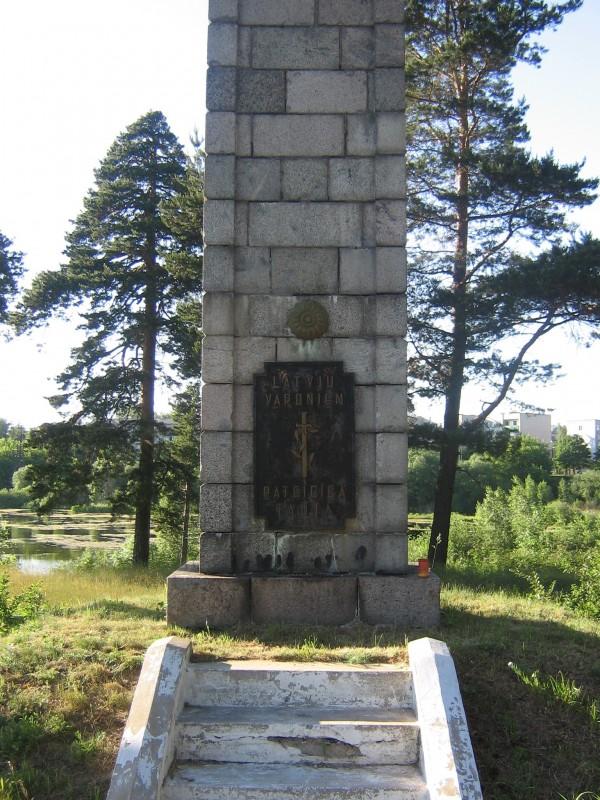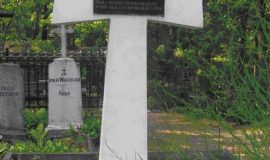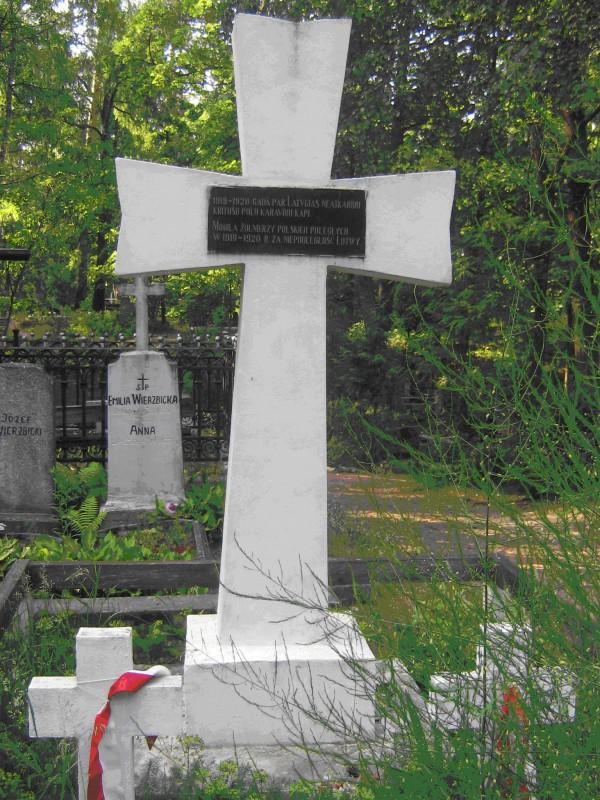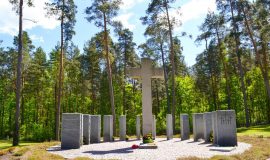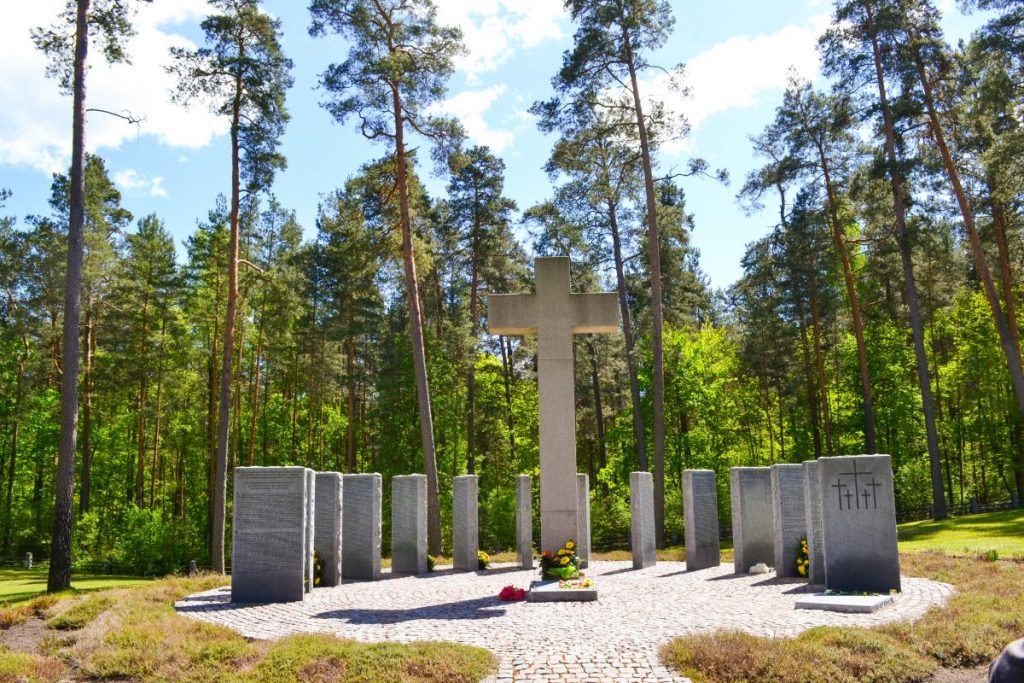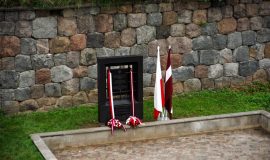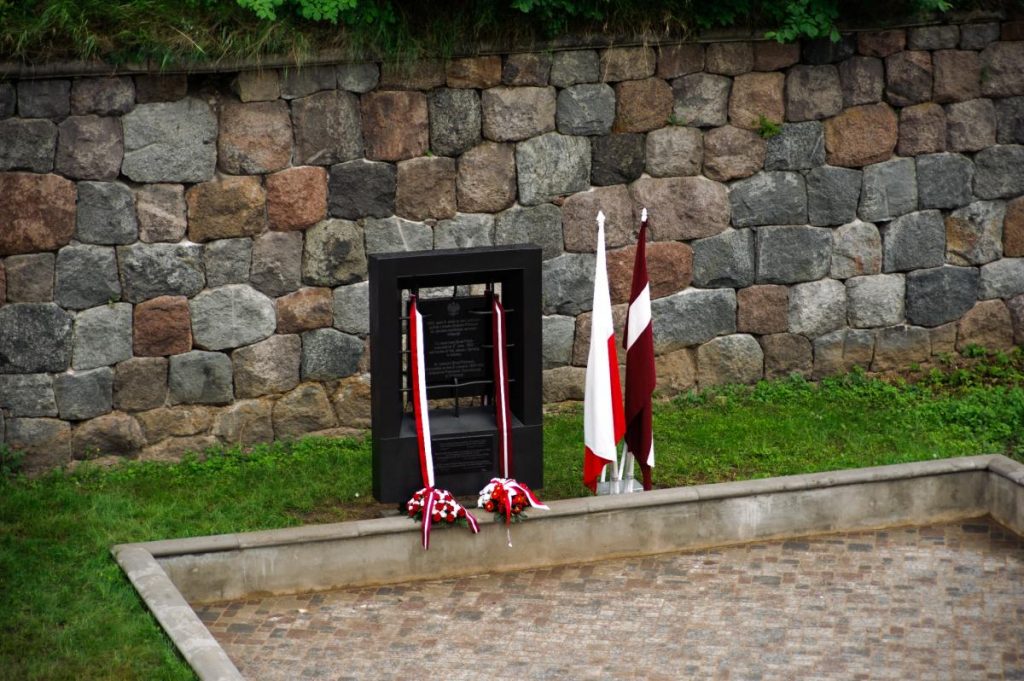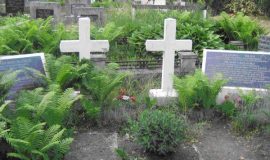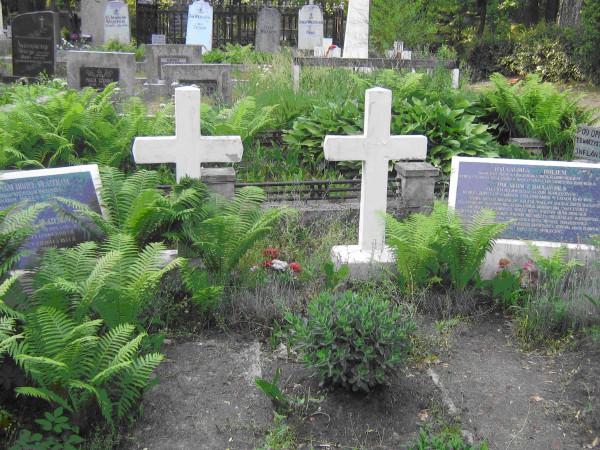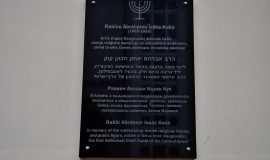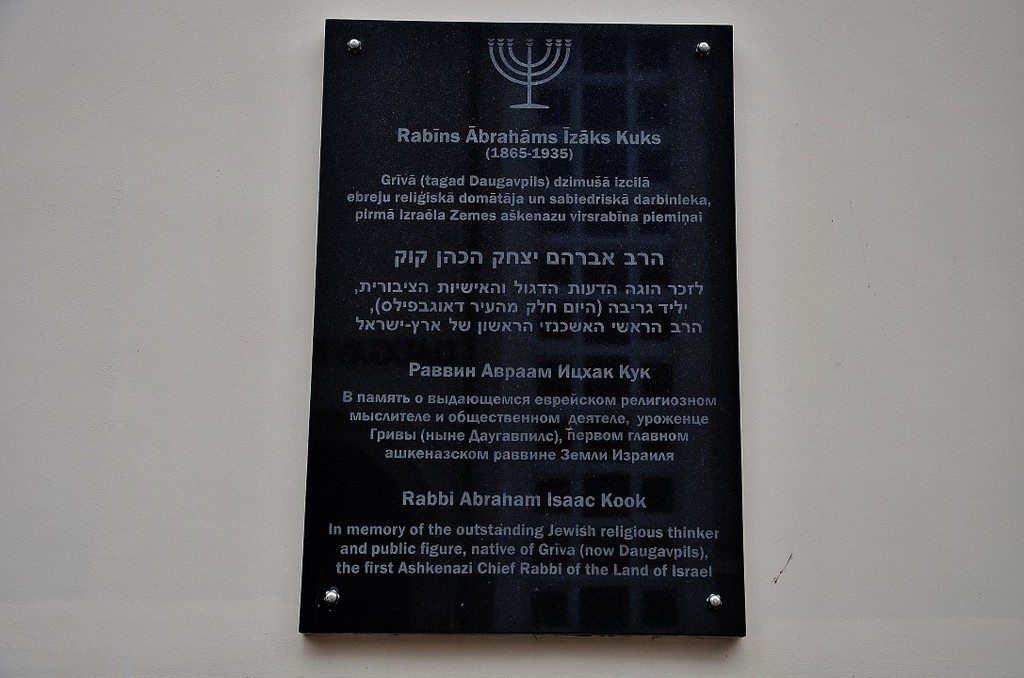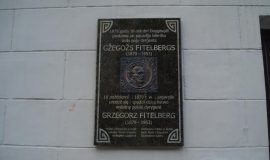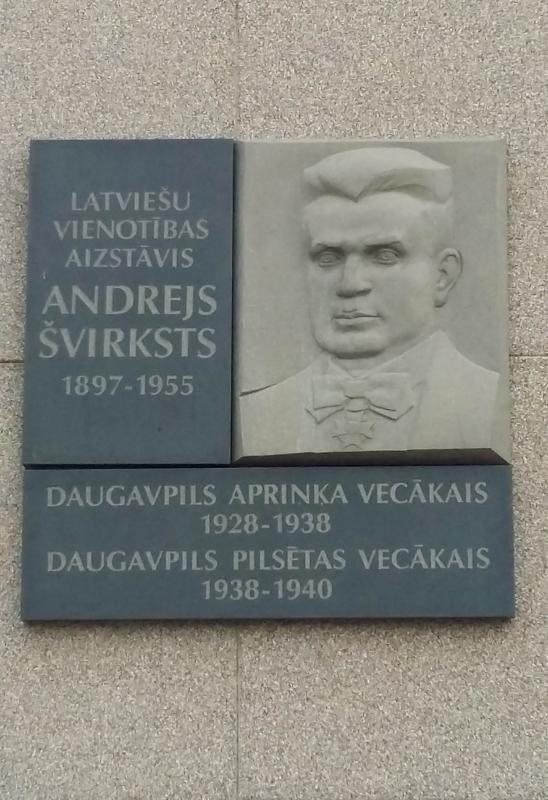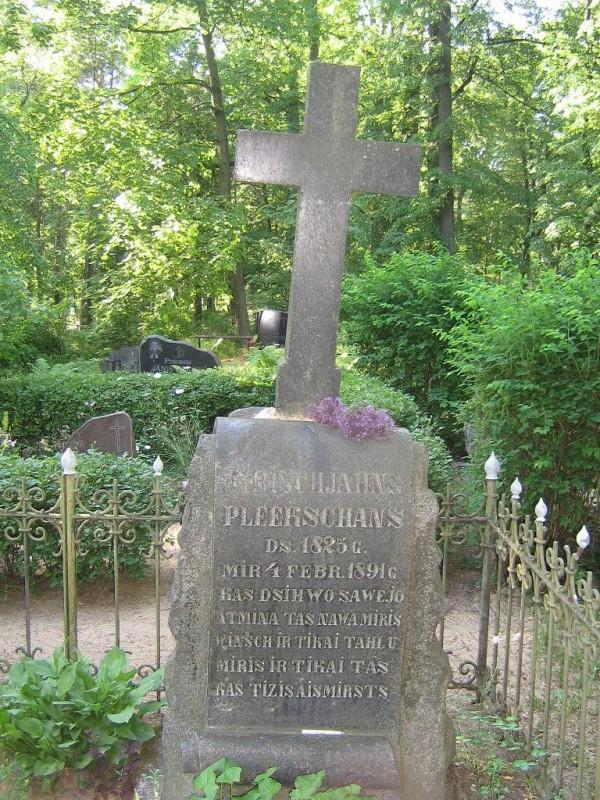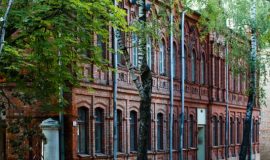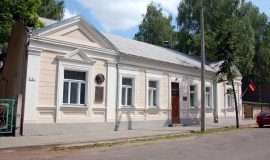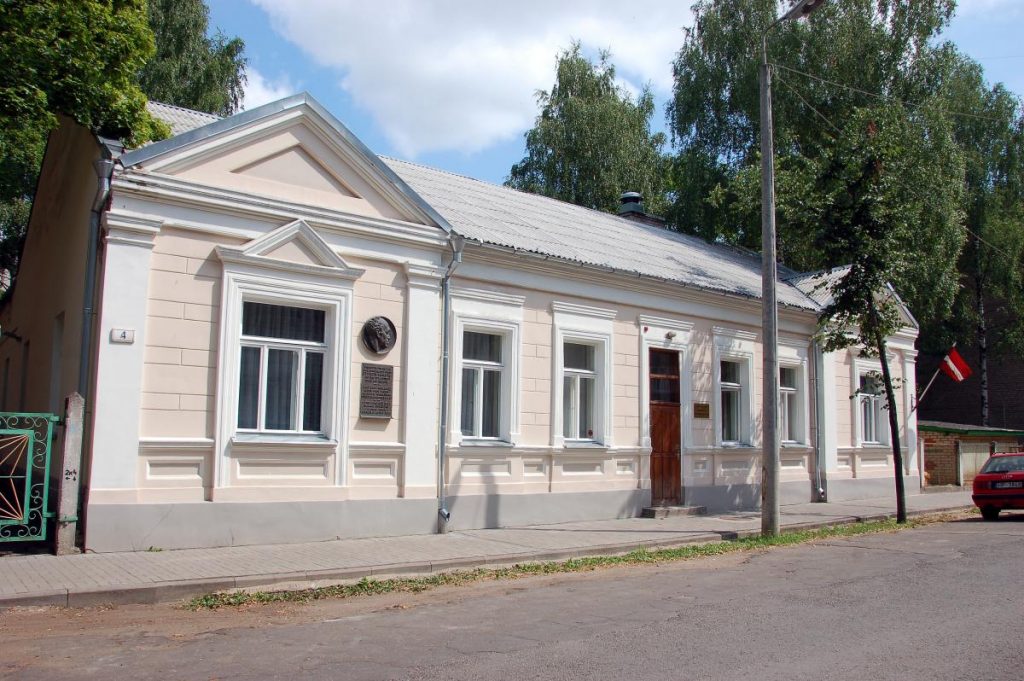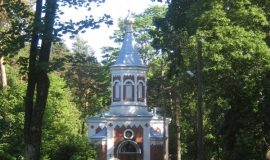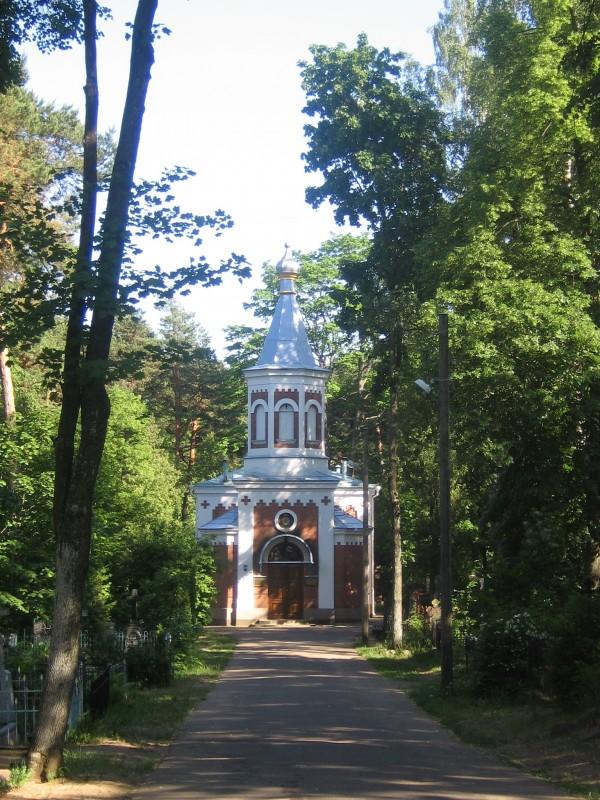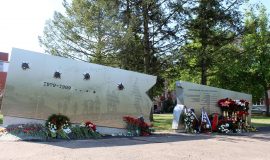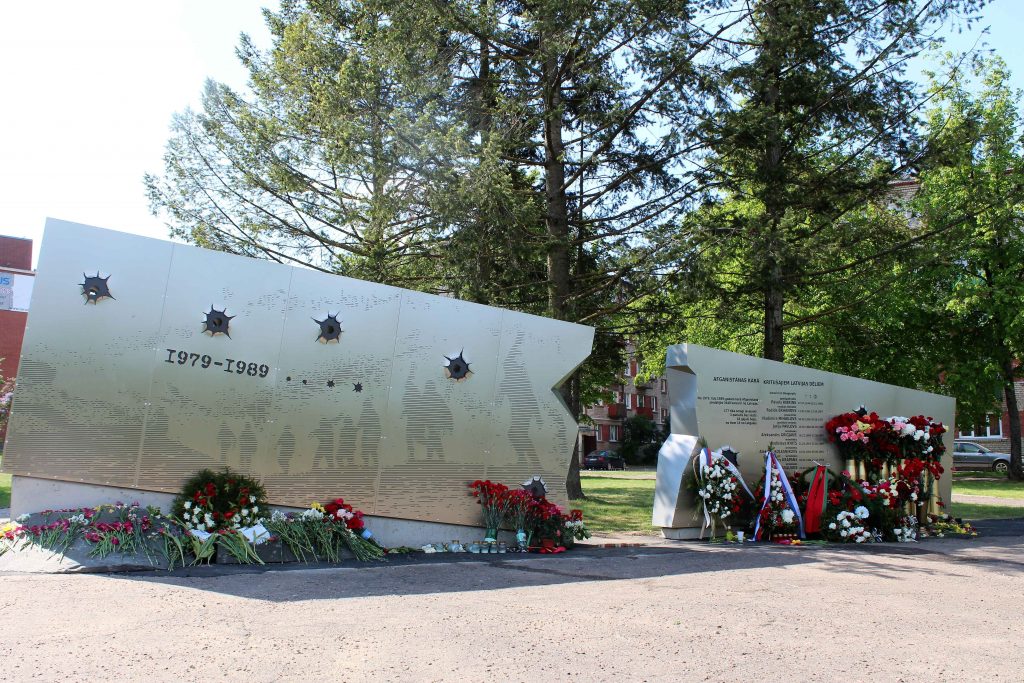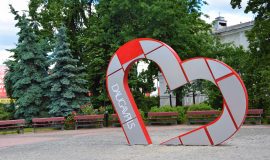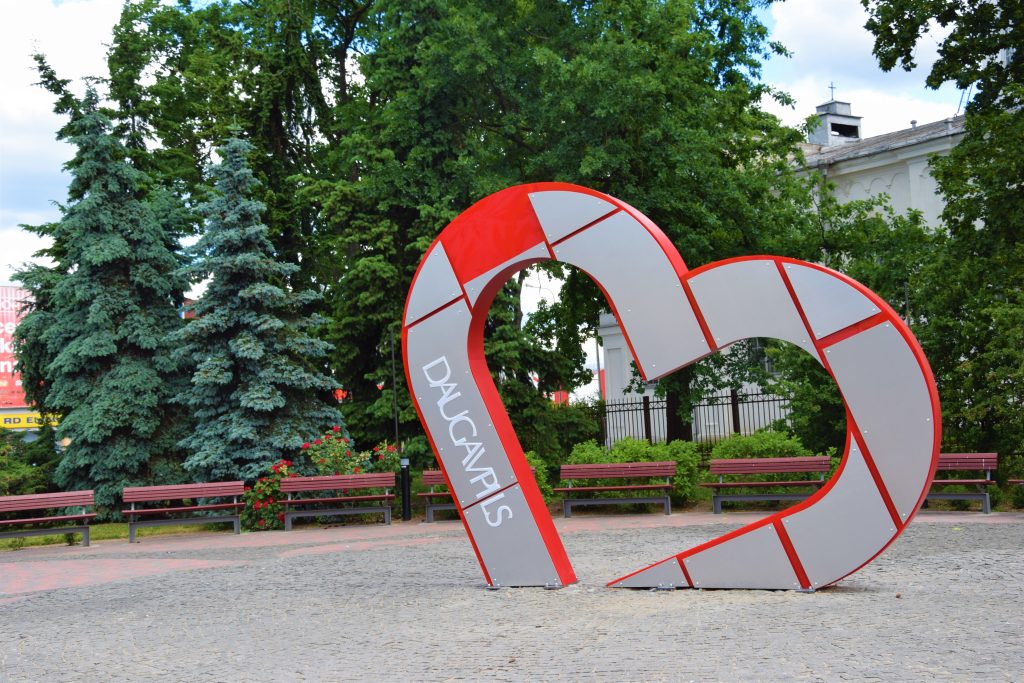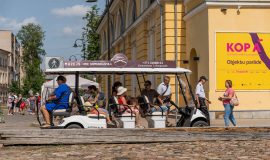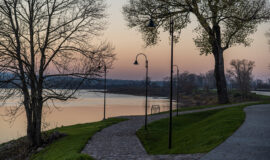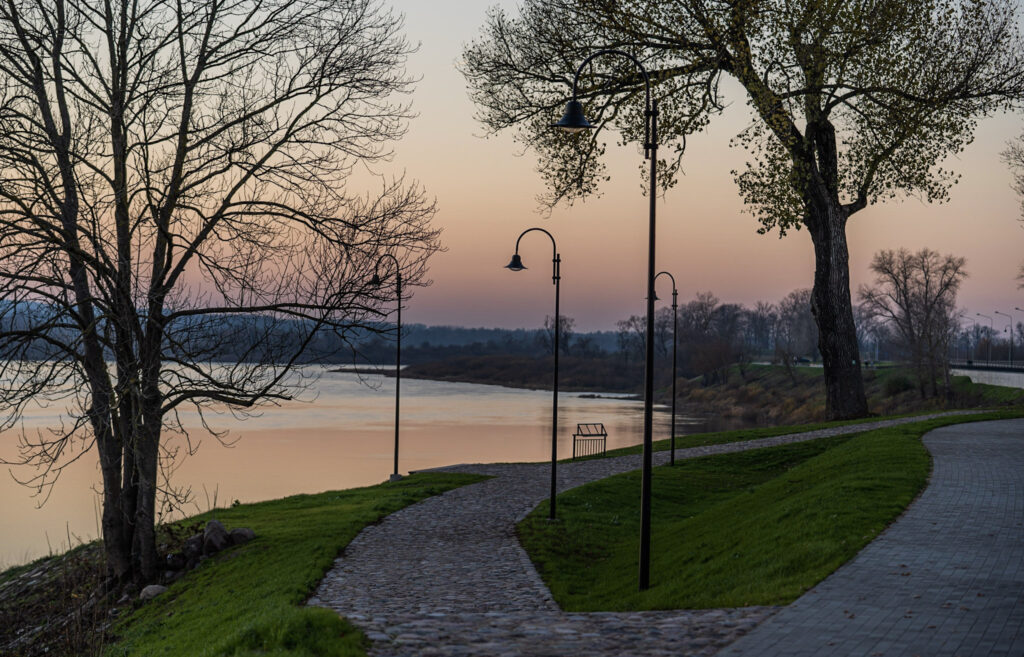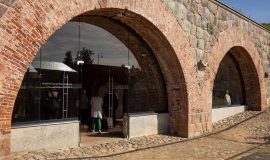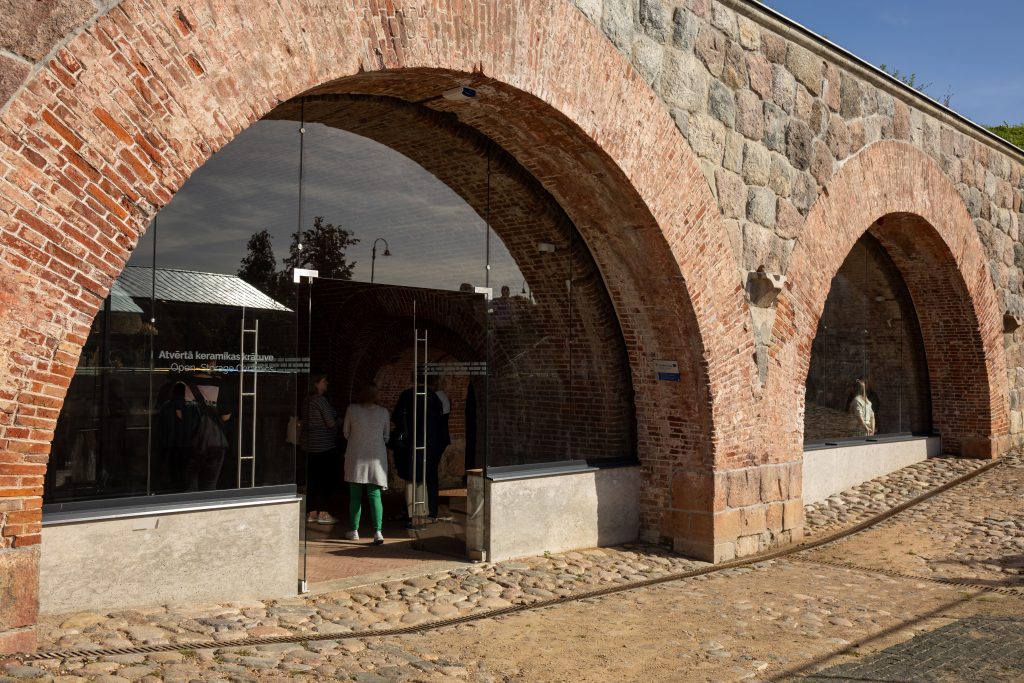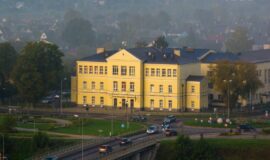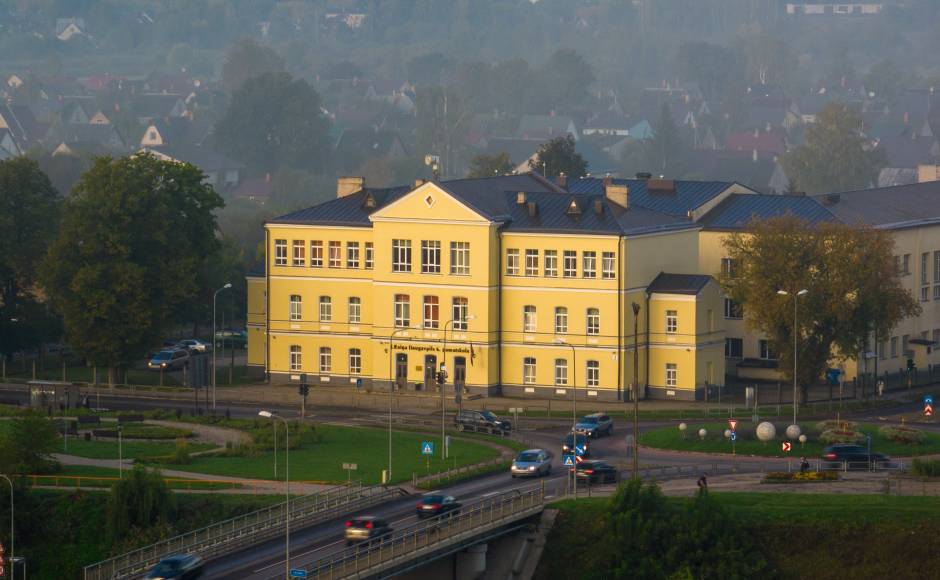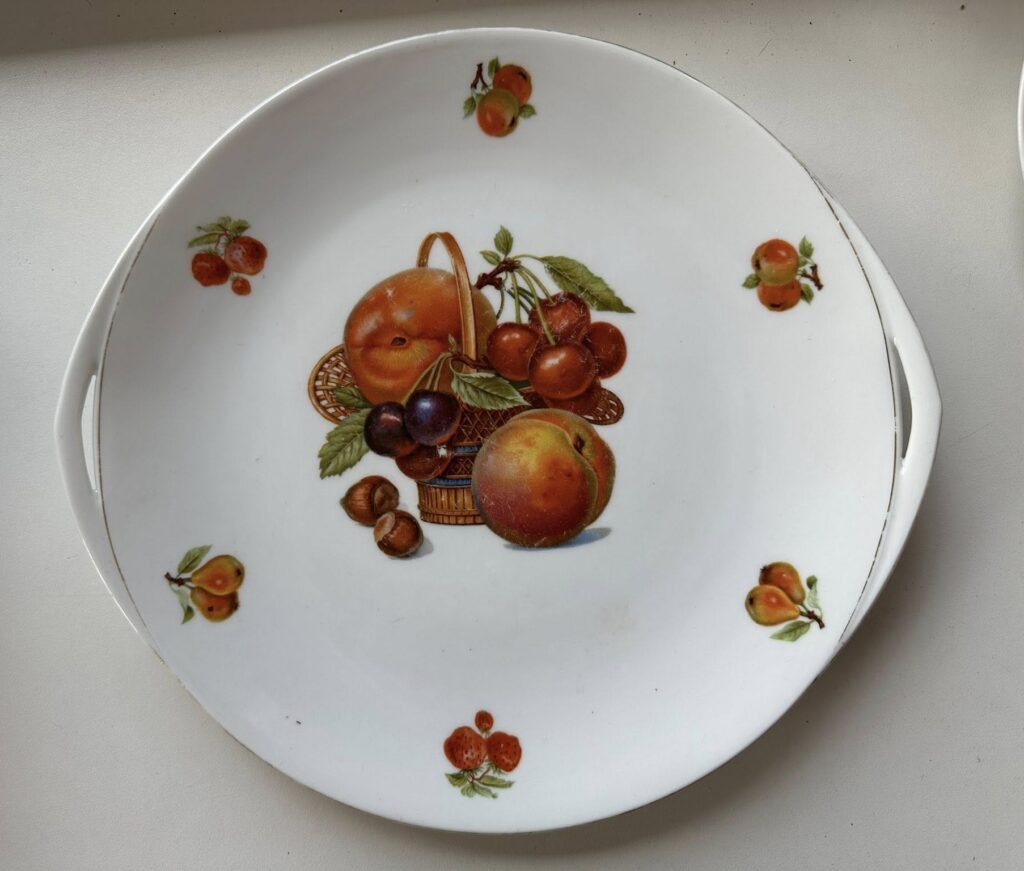Daugavpils Fortress is a unique cultural and historical architectural monument of national importance. Daugavpils Fortress is also considered as the last bastion-type fortress in the world that has been preserved without any significant alterations since the early 19th century.
Culture and history
Daugavpils Fortress Visitors Centre (Water Tower)
Daugavpils Fortress Visitors Centre is established in the building of a former water tower the foundations of which were laid in 1865. Previosly the building was a component part of the fortress water – supply system and also provided water to the fountain in the fortress boulevard.
Rothko Museum
The Rothko Museum in Daugavpils, Latvia, is one of the 21st century’s most ambitious cultural projects in Eastern Europe. Located in the historical artillery arsenal of the Daugavpils Fortress, this multifunctional hub for art, culture and education remains an evolving and inspiring place for creative expression and experience.
“Nicholas Gates – a door to the past” – new historical exposition in Daugavpils Fortress
Daugavpils Fortress Culture and Information Centre presents new historical exposition – “Nicholas Gates – a door to the past”, which is located in Nicholas Gates in Daugavpils Fortress.
Church Hill
Every traveller who wants to be acquainted with Daugavpils should definitely visit the Church Hill that has gathered the churches of four different confessions – Martin Luther Cathedral, Roman Catholic Church of the Blessed Virgin Mary, SS Boris and Gleb Russian Orthodox Cathedral and Church of the Community of Old Believers.
Centre of Technics and Industrial Design “Engineering Arsenal”
Centre of Technics and Industrial Design «Engineering Arsenal» is the largest exhibition of motorised vehicles in the whole Latgale region. It is a unique exhibition space of retro technology and applied design, which is located in the historic 19th-century building of the Daugavpils Fortress.
St. Boriss & Gleb Russian Orthodox Cathedral in Daugavpils
St.Boris and Gleb Orthodox Cathedral was built in 1904-1905 and was consecrated on 12 June 1905. t.Boris and Gleb Cathedral in the sense of the use of numerous decorative elements is recognized as the most gorgeous orthodox cathedral of this region. Its building is justly considered as one of the most spacious, richly decorated and arranged orthodox cathedrals not only in Latgale, but also in whole Latvia.
Daugavpils Martin Luther Cathedral
Martin Luther Cathedral designed by V. Neimanis was built in 1893. The church was made in Neogothic style. It has an asymmetrical planning and one tower. The building was constructed of red bricks.
Viewing platform of Martin Luther Cathedral
The tower stands at a height of 5 houses, and the observation deck is located at a height of about 40 m. It offers panorama of the Church hill.
Daugavpils Roman Catholic Church of the Blessed Virgin Mary
Daugavpils Roman Catholic Church of the Blessed Virgin Mary was built in 1905. The church facade with two towers together with the ordently towers is made in the Neobaroque forms, and the Historicist interiors are augmented by a copy of Bartolome Estebam Murillo’s “Immaculate Conception”.
Old Believers’ Church of Resurrection, Birth of Mother of God and St. Nicholas in Jaunbuve
Daugavpils first Old Believers’ church is one of the biggest in the whole Latvia. The church was consecrated in 1928 in honor of the birth of Mother of God and St. Nicholas.
Latgalian Culinary Heritage Centre “Šmakovka”
The largest Latgalian Culinary Heritage Centre “Shmakovka” in Latvia. The centre invites to listen to a cognitive story about the oldest Latgalian alcoholic beverage – shmakovka that is the culinary heritage of the region.
Daugavpils Lead Shot Factory
Daugavpils Lead Shot Factory is the only one available for tourists ammunition plant in the Baltic States, where is the oldest shot tower in Europe, that still works.
Daugavpils Theatre
The Daugavpils Theatre is one of the oldest professional theatres in Latvia. It is the only professional theatre in Latgale.
Daugavpils Regional Studies and Art Museum
Daugavpils Regional Studies and Art Museum is one of the oldest museums in Latgale, founded in 1938. Located at 8 Rigas Street, in a magnificent building constructed in 1883.
Daugavpils Innovation Centre
Daugavpils Innovation Centre – a new learning environment for everyone, where you can experiment, research, create innovative solutions, develop entrepreneurial abilities, and connect learning content with real life and the digital environment.
Daugavpils Synagogue
Daugavpils synagogue Kadish built in 1850 is located at 38 Cietoksna Street. The Jewish of Daugavpils and Latgale museum is located on the 2nd floor of the synagogue.
Medical exhibition with an exposition of birth control items
Medical exhibition with an exposition of birth control items is a permanent exposition devoted to the history of medicine that is located in Daugavpils Fortress. Four large halls display objects, photographs and documents that tell the story of how people were treated in the last century and before.
Daugavpils Clay Art Centre
The centre offers the possibility to get acquainted with the cultural heritage of Latgale – ceramics and pottery traditions. This is the only place in Latvia where visitors can see and learn about the hardened Baltic raku ceramics which is being matured in fermented rye-flour liquid.
The Historical Centre of Daugavpils City
The historical centre of Daugavpils city is an architectural heritage of national importance (the construction work was carried out in the 19th century according to the project endorsed in St Petersburg in 1826). The historical centre is the greatest attraction of the city and one of the most successful examples of balancing the aspects of ancient and modern times.
Museum “Jews in Daugavpils and Latgale”
Jewish of Daugavpils and Latgale Museum is located on the 2nd floor of the Daugavpils synagogue. The museum exposition tells about Jewish life and living traditions in Latgale and Daugavpils since 1900. The exposition represents the change in the number of Jews, sibling’s stories in photos, household and religious items as well as a variety of publications: magazines, calendars and books about Jews life in Daugavpils and Latgale.
Exhibition of Retro Cars “RetroGaraž-D”
Different automobile brands are represented in the exhibition – 22 “Moskvich”, 2 “Zhiguli”, “Volga” and “Mercedes” cars. This is probably the largest “Moskvich” collection in the Baltic States.
“Pie Komendanta” Museum of the World War I
The museum is located in Daugavpils Fortress. Artefacts that are viewable in Museum of the First World War (1914 – 1918) was found in surrounding of Daugavpils. A museum that is dedicated to the World War I time period. A collection of weapons, artillery shells, grenade and household items (e.g. bottles, glasses and other) are displayed. Old postcards and unique photos can also be found in the collection.
Rīgas Street – Walking Street
About half a kilometer long Rīgas Street is the busiest street of the city leading from the Daugavpils railway station to the Daugava River, with a passage through the embankment to the former landing place.
Daugavpils Bat Centre
Daugavpils Fortress is a place where the second largest in the Baltic States hibernating bat colony inhabits. The fortress walls with a high humidity, as well as a special microclimate in the fortifications create favorable conditions for dwelling. Exposition of the Daugavpils Bat Centre is located in the lateral room of the Niсholas Gate in Daugavpils Fortress.
St. Peter’s in Chains Roman Catholic Church
Saint Peter’s in Chains Roman Catholic Church is built in 1848–1849, rebuilt in 1924–1934. It has some resemblance to Saint Peter’s Basilica in Vatican.
Unity House
The dominating structure of the historical centre of the Daugavpils is the Unity House built during the years of the First Republic (22a Rīgas Street).
The promenade on Bruģu Street on the bank of the Daugava River
On the right bank of the Daugava River, in the vicinity of Gayok district the Bruģu Street promenade has been built. It is aimed at giving the streets a new, functional look and meaning. After completion of the Bruģu Street promenade, Daugavpils city acquired a new, facilitated area for strolling and enjoying the splendour of nature.
Lielais Stropu Lake Promenade
Lielais Stropu Lake – the largest water body in Daugavpils, located 8 km from the city centre, attracts a large number of holidaymakers in the summer season. There is a ~5km long promenade along the shore of the lake. By walking along the promenade from the Central Beach to the left, you can reach the beach “Stropu vilnis”, where the adventure park “Daugavpils Tarzāns” and a camping site are located.
House of Traditions
It is possible to learn about the Latvian folk traditions by working practically, participating in workshops and classes in the House of Traditions. Traditional Latvian festivities are celebrated here, folk craft workshops, exhibitions, training sessions on playing folk musical instruments, seminars on traditional Latvian festivals, games and dances, as well as dance evenings, conversations and discussions on preservation of intangible cultural heritage are held here.
The Centre of Russian Culture (Russian House)
The Centre of Russian Culture offers unique expositions: Old Believers in Latvia, The Orthodox in Latvia, Pictures by Pyotr Khudobchenok, Gzhel Ceramics, Khokhloma Ware, Dinaburg Fortress in the War 1812.
Daugavpils Belarusian Culture Centre
Daugavpils Belarusian Culture Centre offers the excursion „Belarusian House” for pupils.
Polish Culture Centre in Daugavpils
Polish Culture Centre in Daugavpils popularizes Polish language, the culture, the history and national heritage. The Centre organizes exhibitions, concerts, festivals and other cultural events.
Music Square in Esplanade Rest Park
Music Square in Esplanade Rest Park is a place for rest and walks in Daugavpils. The central theme of the new recreation and walking area is the sounds of music in an urban environment. There are various music instrument in the open air which allow to both hear and feel the music in its various forms. There are 10 different outdoor musical instruments – drums, xylophone, tube bells and other interesting objects.
Daugavpils Palace of Culture
Concert hall of Daugavpils Palace of Culture is one of the biggest concert halls in Latvia with capacity to host events for 1070 persons. The Concert Hall has been awarded with compliance certificate from Association of European Mass Event centres in Baltic States, which proves that the concert hall is able to host the highest quality events.
Memorial sign to the King of Poland Stephen Bathory
In 1582, King of Poland Stephen Bathory gave the Magdeburg law for Daugavpils (Dinaburg). Thus, it opened wider opportunities for the development of the city. The clock, gear wheel and clock hands, which are depicted on the monument, represent the history of Daugavpils (Dinaburg) before and after granting the Magdeburg law and historical titles of the city. The bas-relief of Stephen Batory, his sign facsimile and short explanation is also illustrated on the monument.
Dubrovin Park
The development of the park was actively supported by Pavel Dubrovin (1839–1890), who was the city mayor from 1876 to 1890. The park was named after its creator, and not far from the fountain there is a monument to Pavel Dubrovin.
Monument to Pavel Dubrovin
Monument for park creator and ex-mayor of Daugavpils Pavel Dubrovin (1839-1890) is erected in Dubrovin Park. The monument was made by sculptor from Moscow Alexandr Taratinov.
Andreja Pumpura Square
In the square it is situated the bust of poet Andrejs Pumpurs, the Russian Orthodox Chapel of Alexander Nevsky, the monument to the innocent victims of the Communist terror.
Bust of Latvian Poet Andrejs Pumpurs
The poet A. Pumpurs (1841-1902) created epos “Lacplesis” (1888) about the legendary national hero Lacplesis (13th century), the fighter against foreign conquerors that is based on folk tales. The street and the square in the center of Daugavpils, where the bust of the poet is located, have the name of the poet.
Central Park
Central park in modern park with numerous flower beds and plants is a real jewel in the heart of the Daugavpils city.
Sundial
Sundial (1910) located in the Daugavpils University public garden.
Public Garden of Daugavpils University
The features of the square are a small fountain, a bust of the poet Janis Rainis (by I. Folkmanis, 1966) and a Sundial.
The exhibition of “Terra Mariana” album’s facsimile
The exhibition takes place in the lobby on the 2nd floor of Daugavpils University (DU) building, Vienibas iela 13. The album itself is a property of Vatican Library, it was presented to the Pope Leo XIII in 1888 by the inhabitants of the Baltic region as a gift on the 50th anniversary of the Pope’s ordination.
“Bunker” Gallery
“Bunker” gallery is located in the basement of an apartment building in the authentic Soviet-era bunker with the heavy original metal door. There are more than 300 exhibits that belongs to different periods of history: the end of the 19th century and the beginning of the 20th century, World War I and World War II, Latvia’s first independence period and Soviet time.
Forstate Heart of Jesus Roman Catholic Church
The church in the urban landscape is distinguished by its pointed tower made in the Gothic style and by light finishing of the facade. In addition, this project combines classical and modern, as the temple of God is located near the cultural and historic wooden building which is typical for Daugavpils.
Grīva Roman Catholic Church of the Holy Mary
Grīva Roman Catholic Church of the Holy Mary was built in 1881 – 1889 and altered in 1935 – 1942. Next to, it a bell tower was built in 1990 (arhitect: Kazimirs Lielausis). Grīva Church is a brick building with Romanesque and Gothic elements in the facade decoration. The most important interior features are the 3 stained glass windows with figural scenes, made at the St. Lucas Workshop in Warshaw in 1889. The pipe organ made at the Krustpils workshop of Friedrich Weissenborn in 1890.
St. Alexander Nevsky Orthodox Church in Daugavpils
The church was consecrated in 1897. The church is a one-story wooden log building that is not covered with boards. The pointed towers with four-sided roof are located above the side entrances on the roofs. The part of the altar roof is decorated with a tower, which hexagonal volume supports the cupola with a cross in the form of an onion.
St. Nichola’s Russian Orthodox Church in Daugavpils
St. Nichola’s Russian Orthodox Church in Daugavpils was built in 1894 and is located near graves. It is built of red bricks; the decorative masonry bands are made in the corners of the building, above the footings and under the roof cornices.
Daugavpils St. Peter and Paul Russian Orthodox Church
Daugavpils St. Peter and Paul Russian Orthodox Church has two towers: a bell tower above the entrance and smaller tower at the east end. The icons date from 1833 up to the earl 20th century, one group of them brought from Moscow.
Dormition Orthodox Church
Dormition Orthodox church was consecrated in 1877. In 1964 The Soviets closed it. Until 1991 there was a library in the church building. In 2007 the first divine service took place in the renovated church.
St. Nicholas Russian Orthodox Church in Griva
St. Nicholas Russian Orthodox Church in Griva was consecrated in 1924. The wooden carvings are the characteristic feature of the church.
Old-believer’s Prayer House in Gajok
Old-believer’s Prayer House of The Annunciation of the Most Holy Mother of God and Nicholas the Wonderwoker in Gajok. Old-believer’s Prayer House in Gajok was consecrated on March 30 in 1886. The church was one of the most beautiful religious buildings in Daugavpils. The hand of a professional is clearly seen in the architectural shapes of the church.
Old Believer’s Prayer House in Griva
The temple was built in the 30s of the 20th century.
Old-believer’s Prayer House in Niderkuni
Old-believer’s Prayer House in Niderkuni was built in 1907, but in 1908 – 1911 work on the interior design was carried out. The parishioners presented icons and books to the new church. The icons painted by Konstantin Pavlov, Vasilij Kirillin, Barbara Kirillina and Leontij Seleznev have remained in the iconostasis till nowadays.
Memorial Place of the 1st Baltic Old-believers Prayer House (1660)
In Daugavpils, at the cross point of Baznicas and Liginisku streets, the memorial place of the first Baltic Old Believer’s prayer house (1660) is located.
Protection Embankment
A unique 6-km long engineering structure along the bank of the Daugava River, which not only protects the city against floods, but also serves as a road.
Ensemble of Administrative Buildings and the Building of the City Classical School
Ensemble of Administrative Buildings and the Building of the City Classical School in Daugavpils designed by A. Y. Shtaubert, a famous Russian architect, the buildings were constructed at the beginning of the 1840s in the classical style.
Art Nouveau buildings
Art Nouveau buildings in Daugavpils located at 41 Saules Street, 55 Saules Street and built at the end of the 19th – the beginning of the 20th century.
Unity Square
Unity Square is the heart of the city where all the greatest events of the city take place. The Square unites the inhabitants of the city during the most significant events.
Daugavpils Railway Station
Daugavpils is a railway hub with 5 railway lines. The present building of the railway station was constructed in 1951.
Sculpture Garden
The Sculpture Garden is decorated with the works of Latvian sculptors and magnificent carpets of flowers.
Daugavpils Water-supply Museum
The museum exposition includes historical documents and photos of Daugavpils water-supply system.
The Stropu Stage
The stage in Stropi is the cultural-historical complex, situated in a scenic place with interesting relief and is the place for carrying out big folklore events, song festivals and performances.
The open-air art work “GHOST OF THE FORTRESS”
The open-air art work “GHOST OF THE FORTRESS” was created in 2017 during the Second International Sculpture Symposium. The main inspiration for the work came from the Daugavpils fortress. For Daugavpils fortress it is ghost of a war horse, because as a war horse, fortifying structures like the one in Daugavpils was once a crucial military instrument that became obsolete as the progress rolled on.
Environment object “Tribute to Rothko”
On 25 September 2016, which was the 113th Mark Rothko’ birthday, near to Mark Rothko Art Centre was opened an environment object “Tribute to Rothko” made by the French artist Patrick Peltier.
Dedication to Rothko Memorial Monument
Dedication to Rothko memorial monument that was created by the artist Romuald Gibovsky, was erected on the picturesque bank of the River Daugava – the source of the brightest impressions of the artist’s childhood.
Memorial to Commemorate Victims of the Genocide against Jews and of Daugavpils Ghetto
The Memorial to commemorate the victims of genocide against Jews and prisoners of the Daugavpils ghetto was opened on 10 November 1991, commemorating the fiftieth anniversary of the beginning of the Holocaust (author of the memorial – sculptor Oleg Marinoha). The memorial consists of a granite stele with the Star of David cut into it and an inscription on Yiddish “To the Memory of the Children of Israel”, with 16 stone steles placed on both sides of it, symbolically reminding of the memory of the Holocaust victims from various European states.
The memorial stone “In memory of Daugavpils ghetto prisoners”
On 6 September 2015 in the place of former Daugavpils ghetto, next to Daugavgrīva Prison the Jewish community of Daugavpils unveiled a monument with an inscription in English, Latvian, Russian and Hebrew: “In memory of ghetto prisoners. From July 15, 1941 to May 1, 1942 Daugavpils Jewish ghetto was located here.”
Memorial to the Victims of Nazism
From July 1941 to the end of 1943 in the Mežciems (historical name – Poguļanka) Forest Jews, taken from Daugavpils ghetto at various times, were shot here. The exact number of victims is unknown. In 1960 a memorial (sculptor Harijs Sprincis, architect Zigurds Ābelīte) to the victims of Nazism was unveiled in the Mežciems Forest; however, the most part of the monument was destroyed in the 1990s. On 9 July 1989 Jewish activists from Daugavpils reinterred the remains that had been found at the end of the 1980s in Mežciems in separate pits. In 2007 the Council of Jewish Communities of Latvia placed on the site two black granite plaques with an inscription in Latvian, Russian, English and Hebrew: “The remains of prisoners of the Daugavpils ghetto are buried here”.
Monument to the Victims of Action of 8–9 November 1941
In total approximately 15 000 to 20 000 Jews were placed in the Daugavpils ghetto, of which less than 100 persons survived. On 8 – 9 November 1941, as the result of regular selection in the ghetto, 1134 Jews, children among them, were sent to Mežciems and shot. In 1967, on the site of mass murder, close to the Mežciems Station a memorial obelisk was erected. In 1974 a memorial stone was placed, its inscription in Russian sates: “In this place on 8–9.11 1941 German fascists shot 2000 civilians – children and adults”.
Holocaust Memorial Place in Railwaymen’s Garden
The Nazi troops entered Daugavpils on 6 June 1941 and already on the first days of occupation launched the campaign to exterminate the Jews of Daugavpils. Until 7 July 1125 Jews were arrested and taken to the prison, they later were shot in the Railwaymen’s Garden. During the Soviet period a granite stele on a concrete base was erected here, it bears the inscription “Here the fighters, commanders of the Soviet Army, tortured to death by German–fascist invaders in 1941–1945 are buried. Eternal glory to those who perished.” In 2007 the Council of Jewish Communities of Latvia placed a memorial sign – two black granite plaques with the Stars of David and an inscription in Latvian, Russian, English and Yiddish: “In July 1941, the Nazis executed here more than 1,000 of Daugavpils Jews”.
Holocaust Memorial Place in the Daugavpils Communal Cemetery
A part of Daugavpils ghetto prisoners, who were shot in the Mežciems Forest, have been reinterred in the Daugavpils Communal Cemetery, their remains were found in the 1950s. During the first post–war years the reinterment site was in the Old Jewish Cemetery, but in the 1970s, when the Cemetery was liquidated, the monument was moved to the Communal Cemetery. There is an inscription in Russian and Yiddish on the monument: “Here Jewish families rest, shot by Hitler’s executioners in 1941–1945”.
Memorial Stone at the Place of the Old Jewish Cemetery
The memorial stone by artist Juris Pundurs was erected on September 12, 2013, in Aizpilsetas park close to the Gubisces lake (behind Daugavpils 15th Secondary School), in the place where once was the old Jewish cemetery.
Memorial Stone to the Innocent Victims of Red Terror
Memorial Stone to the Innocent Victims of Red Terror was erected in 2004 (sculptor is J. Volkova).
Memorial place of graves of soldiers of Polish army of the 1st Legion Regiment
Graves of the soldiers of the 1st Legion Regiment of Polish army in Slobudka, near Satiksmes street were the biggest ones in Latvia of Polish soldiers, who fell in Latvian fight for freedom in 1919 -1920, a cemetery, where 500 soldiers were buried. On June 22 in 1928 Latvian President Gustav Zemgals opened a monument at this cemetery.
Warrior’s Cemetery of Latvian Army Soldiers Killed in Latvia Liberty Battles
The mass grave of fallen in Latgalian battlefront in 1920 Latvian army soldiers of Latvian fight for freedom is located in Daugavpils Lutheran cemetery. At this place on June 22 in 1928, the President Gustav Zemgals opened a granite monument, which was created by architect Alexander Birzenieks.
Graves of soldiers of Polish army fallen in Latvian fight for freedom at Daugavpils Catholic cemetery
At the right side of Daugavpils Catholic cemetery, the graves of Polish army soldiers are marked with a marble plate and a cross. There is an inscription in Polish on a tomb plate: “Tomb of the unknown soldier”. On January 21 in 1920 Polish soldiers from Daugavpils Polish military hospital 101 (Warsaw Street) were buried there.
The Memorial in honour of the fallen German soldiers of the World War II
In Daugavpils you can visit the biggest reconstructed German soldiers’ cemetery in Eastern Latvia in honour of the fallen in World War II, where 3000 soldiers are buried and among them also Latvians. Graveyard is denoted with groups of crosses.
The Memorial Plaque to the Count Leon Plater
Daugavpils Fortress was an imprisonment place of downtrodden participants of Polish uprising where leader of the uprising Leon Plater was sentenced to death penalty.
Memorable place of Count Leon Plater at Daugavpils Catholic cemetery
The memorial place of Leon Plater is set at Daugavpils Catholic cemetery. The black granite plate, which is decorated with the inscription: “To count Leon Broel Plater – the organizer of Polish uprising (killed on June 9 in 1863)” is erected there. Originally, the plate was erected on June 9 in 1923, but renewed in 2002.
A Memorial Plaque to Rabbi Abraham Isaac Kook
The Memorial Plaque to Rabbi Abraham Isaac Kook (1865 – 1935) was opened on March 7, 2013 on the wall of the Daugavpils Synagogue. Rabbi Abraham Isaac. He was the outstanding Jewish religious thinker and public figure, the first Ashkenazi Chief Rabbi of the land of Israel.
The bust of poet Rainis
Daugavpils is the poet Rainis’ first childhood city. On the front square of Daugavpils University there is the poet’s bust sculpture made by sculptor Indulis Folkmanis (1966).
A Memorial Plaque to Gzegoz Fitelberg
Gzegoz Fitelberg (1879 – 1953) was born in Dinaburg (Daugavpils) in Jewish-Polish family.
The memorial plaque of Andrejs Shvirksts
Andrejs Shvirksts (1897 – 1955) was Local government officer (since 1928 till 1934 – the Chairman of the Daugavpils district, since 1934 till 1938 – the senior of the Daugavpils district, sine 1938 till 1940 – mayor of Daugavpils), Public figure (since 1938 till 1940 – Chairman of the Association of Latvians of Daugavpils).
The Grave of Education Officer Valerija Seile (1891-1970)
Valerija Seile (1891-1970) was an educator, publicist, bibliographer. She was the first Constituent Assembly Member, the director of Daugavpils Teacher Institute.
The Grave of Latvian Poet Rainis Father Krishjanis Pliekshan
The father of the poet Rainis Krishjanis Pliekshan leased several manor in the nowadays Daugavpils region territory – in Birkineli, Randene and in Vasiljovo. He died in 1891 and was buried in Daugavpils Lutheran cemetery.
Latvian Culture Centre (Concert Hall in Unity House)
Latvian Culture Centre is situated in premises of Unity House, which is the leading culture organisation focusing on preservation and popularisation of Latvian culture in Daugavpils.
Red Bricks Buildings in Daugavpils
Daugavpils is exceptionally rich in red brick buildings. The shape-forming techniques typical of eclecticism that were applied in the facades of these buildings even many decades later make one appreciate and admire the striking accuracy of detail.
Family House of the Actor Solomon Mikhoels
There is house number 4 on Mihoelsa Street at Daugavpils, where the great actor Solomon Mikhoels was born in 1890. This outstanding person is rightly considered the legend of the 20th century theatre.
St. Alexander Nevsky Russian Orthodox Chapel
St. Alexander Nevsky Russian Orthodox Chapel was consecrated in 2004. Located in A. Pumpurs public garden (20 Saules Street) on the former site of St. Alexander Nevsky Cathedral (1864–1961). The chapel is a memorial structure that has a symbolic meaning, serving as a reminder of the demolished cathedral.
St.Nichola’s Russian Orthodox Church in Daugavpils
It was built in 1894 and is located near graves. It is built of red bricks; the decorative masonry bands are made in the corners of the building, above the footings and under the roof cornices. A semi-circular-shaped sheet metal roof is constructed above the entrance door, where there is also a small round window with St. Nicholas painting in the center of it.
Monument to the fallen in Afghanistan War
The monument was unveiled in 2017 in Jātnieku Street Square. The monument commemorates those who died in Afghanistan War.
The Monument to the 10th Aizpute Infantry Regiment of Zemgale Division soldiers fallen in the Latvian War of Independence
On November 14, 1924, in the garden of the Daugavpils Fortress, a monument of remembrance to 44 soldiers of the 10th Aizpute Infantry Regiment of Zemgale Division, who died in the Latvian War of Independence, was unveiled. During the Soviet period the monument was destroyed. On 2017 the monument has been restored to its original state. With an official opening ceremony the restored monument was unveiled on November 14, 2017.
Salon Antique “Housevintage”
The salon offers to view and purchase historical furniture, dishes, clocks a.o. interior objects from the late 19th and early 20th century.
“I Love Daugavpils” an open-air art object
An art object “I Love Daugavpils” is installed in the Daugavpils city centre on the square near the Saint Peter’s in Chains Roman Catholic Church.
Sightseeing tour in Daugavpils Fortress on electric bus
The creators of the Museum of the World War I “Pie Komendanta” offer sightseeing tours in Daugavpils Fortress on an electric bus. During the trip, guests and residents of the city will be introduced to the most interesting and significant objects of Daugavpils Fortress and their history.
Art object “DAUGAVPILS”
An environmental object has been installed in Daugavpils near the place where Laucesa River enters Daugava River – large-format letters that form the inscription “DAUGAVPILS”.
Fortress promenade
The total length of the promenade is around 1 kilometre, it goes on the upper level of the protection dam around the fortress. The fortress promenade is a great place for leisurely walks, to view fortress fortifications on both banks of the River Daugava, as well as to enjoy sunsets and slow flow of the river.
The open-storage chamber for contemporary ceramics
The 7th bastion casemate of the Daugavpils Fortress is officially available in its new function – as an open-storage chamber for contemporary ceramics from the Rothko Museum collection. The new open-storage chamber displays over a hundred artworks by artists from 40 countries.
The Сentre of the outstanding Latvian writer Rainis
The Rainis Centre is a new cultural place in the vicinity of Griva, which operates under the auspices of the Daugavpils Regional Studies and Art Museum, offering Daugavpils residents and city guests to get to know the history, cultural heritage and notable personalities of the left bank of the Daugava.
Iveta Krilova’s private collection gallery “Iveta’s Porcelain Gallery”
The private collection gallery of Iveta Krilova “Iveta’s Porcelain Gallery” is open in the Daugavpils Palace of Culture. The private collection includes pre-revolutionary and Latvian Independent State porcelain items, as well as porcelain from Riga porcelain manufacturers of the 1940s-1970s.


